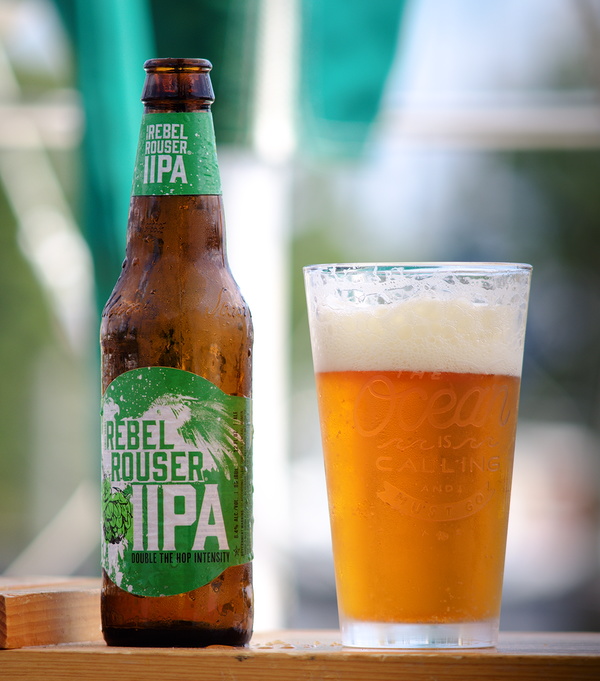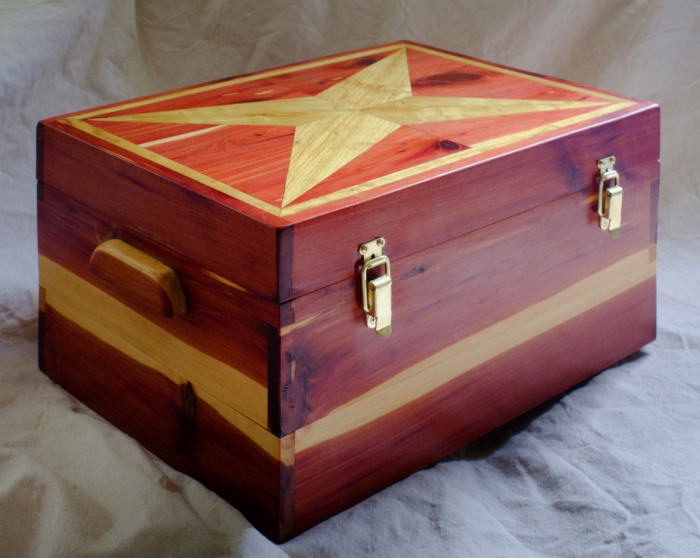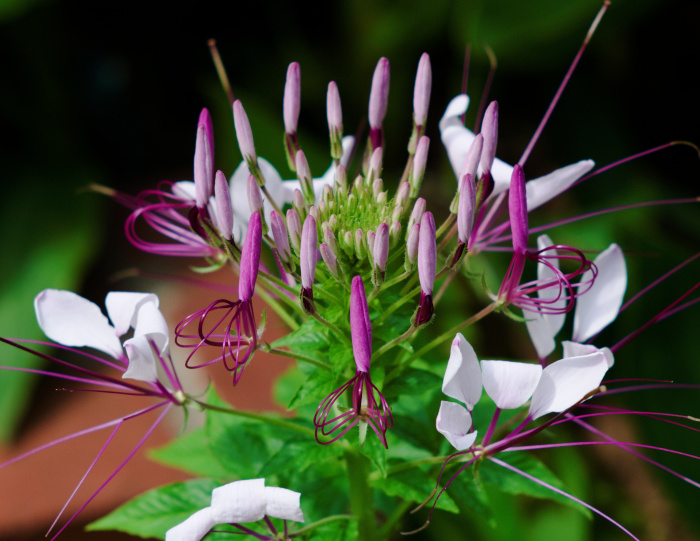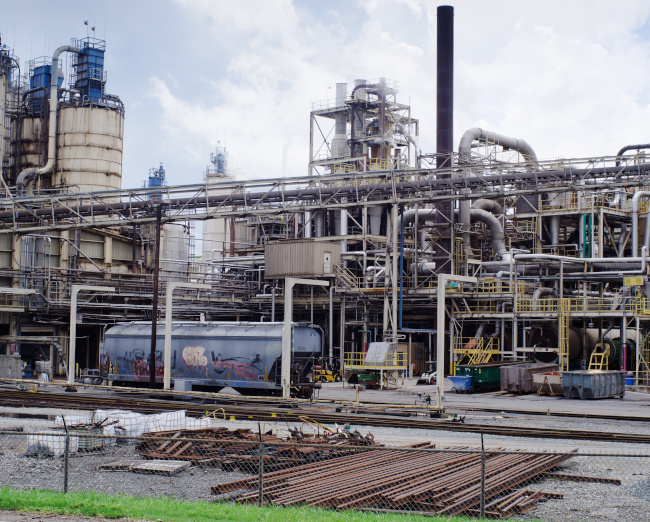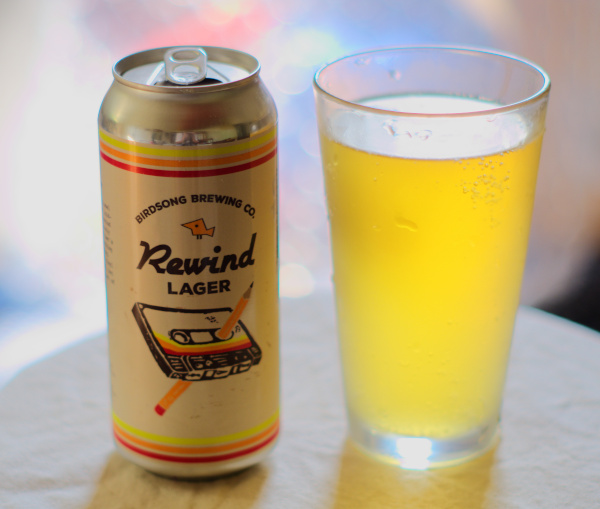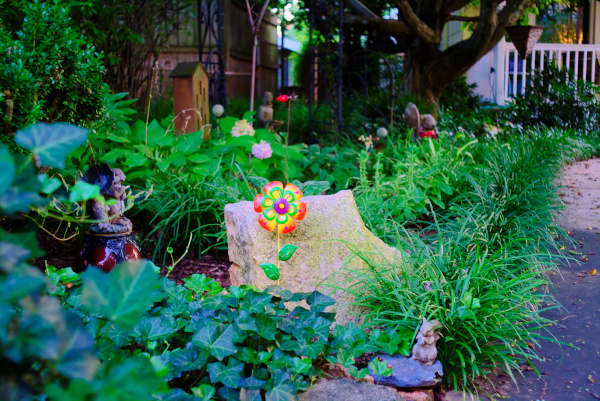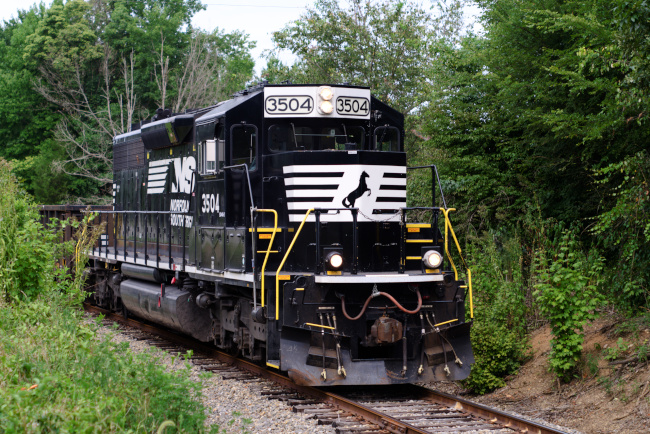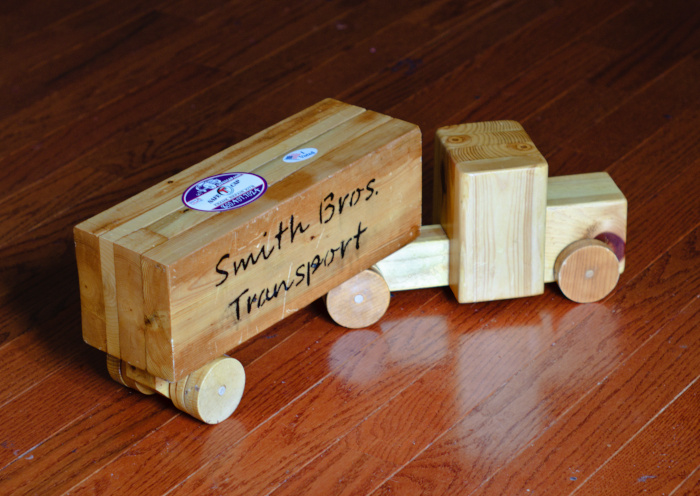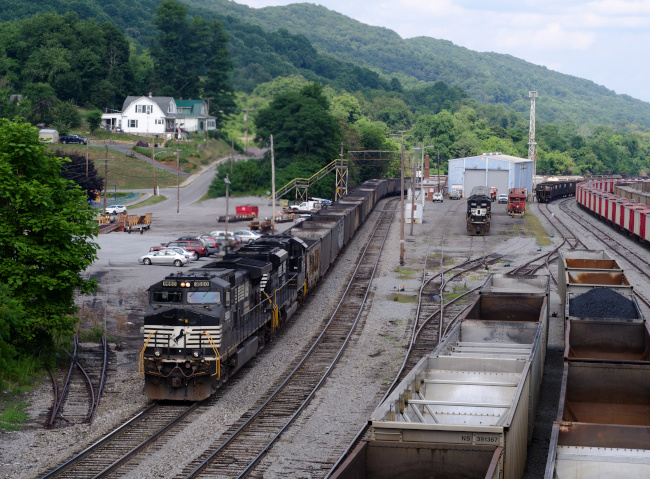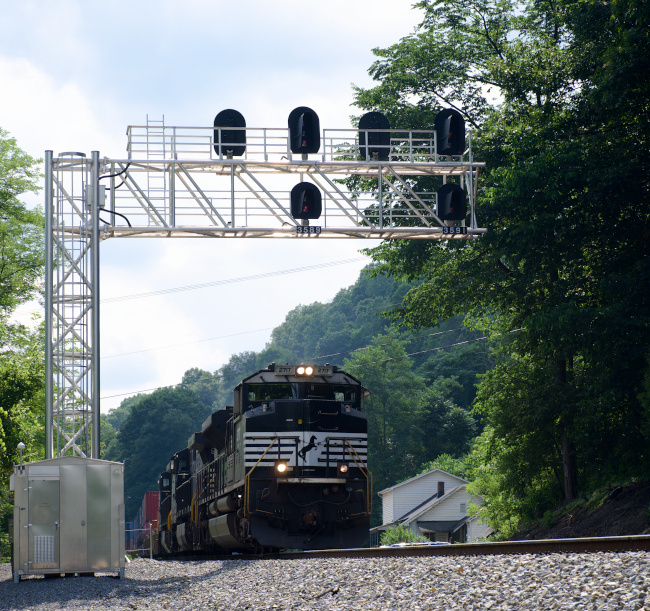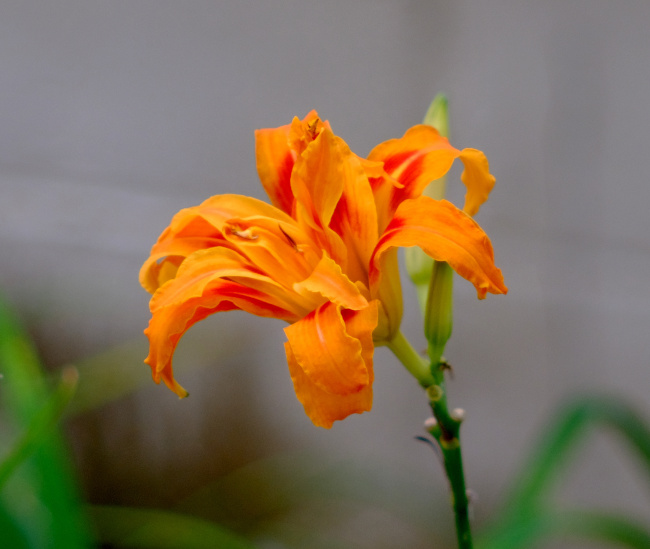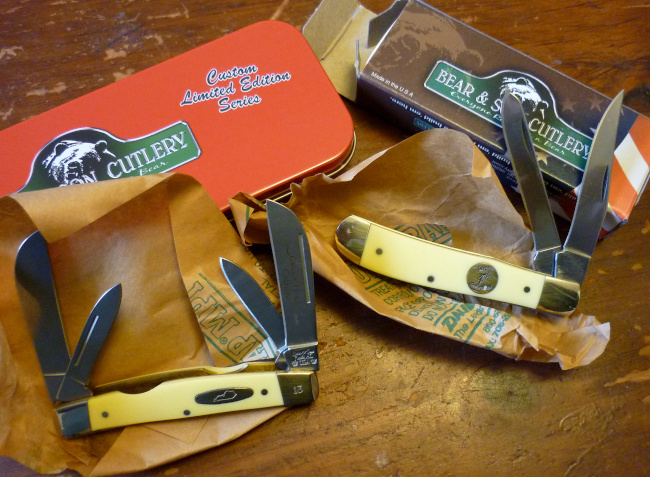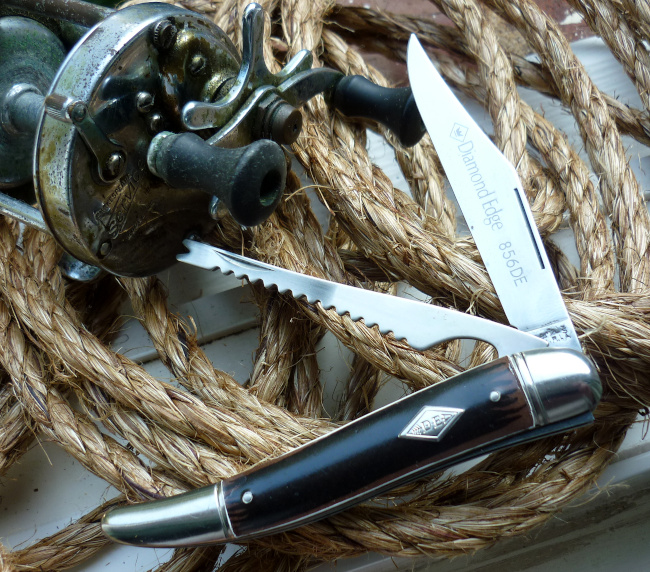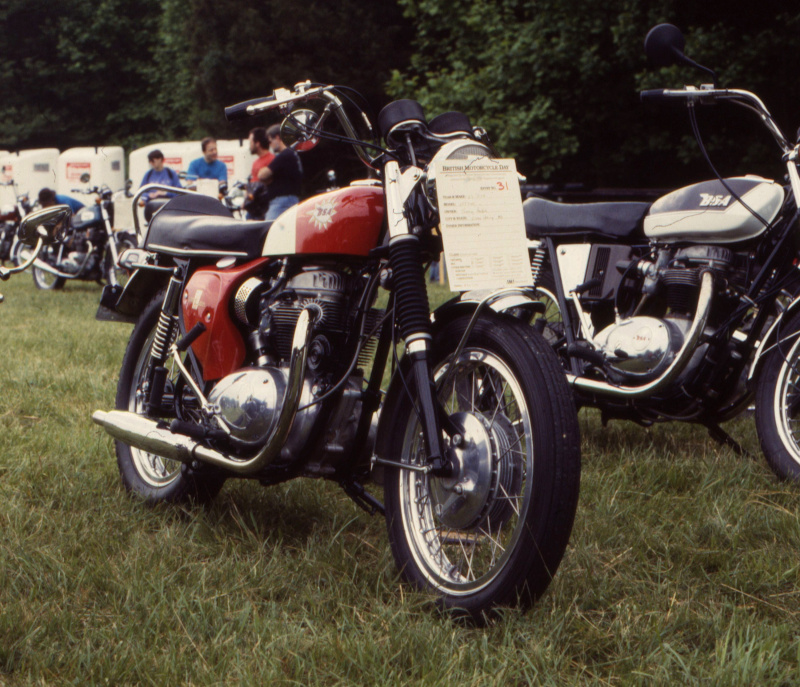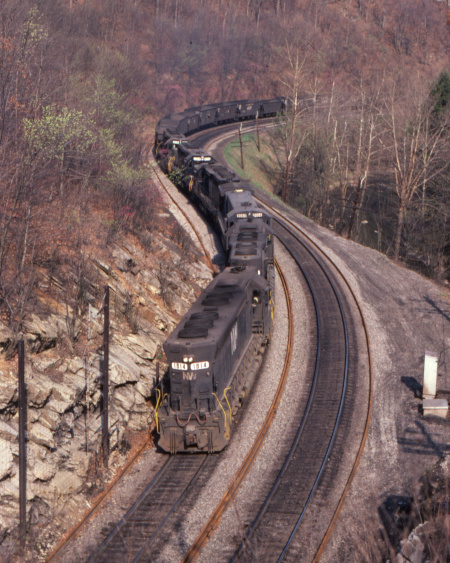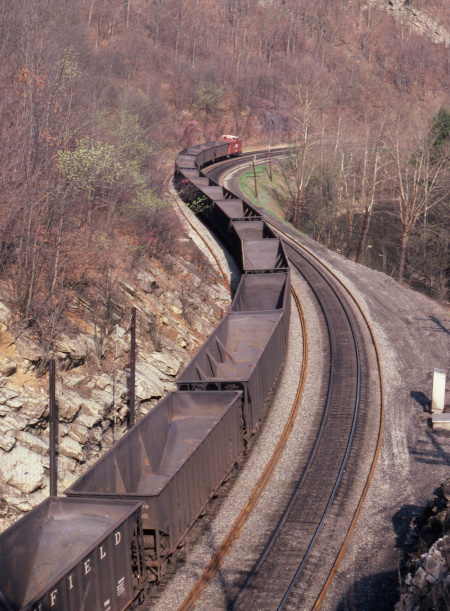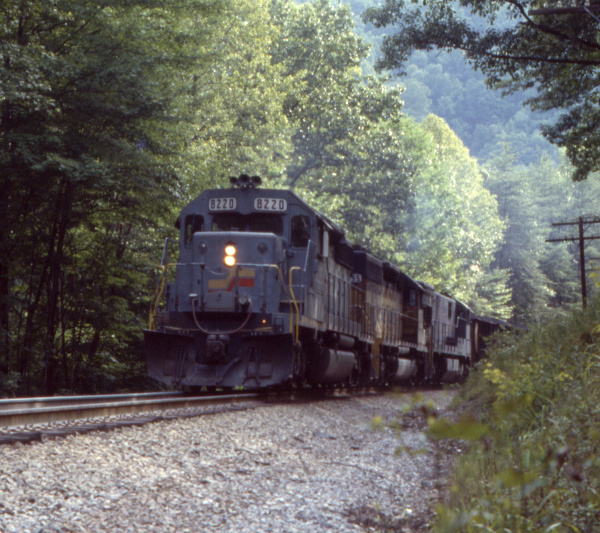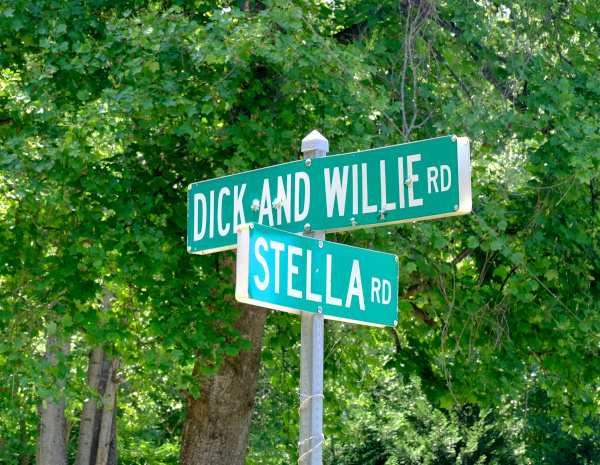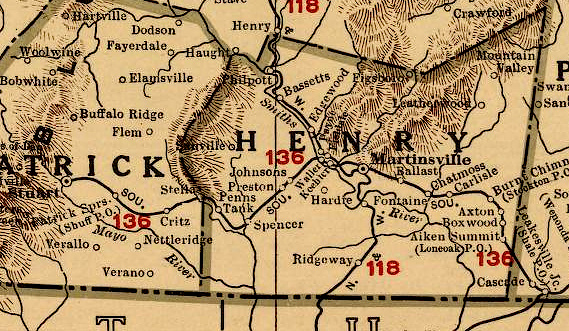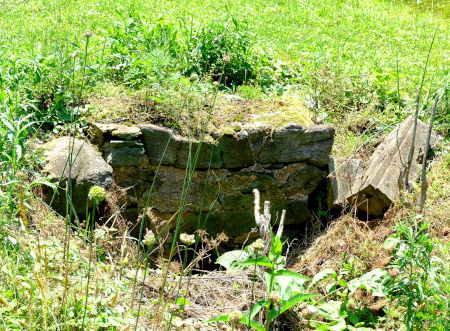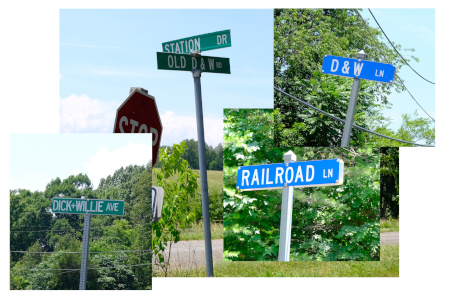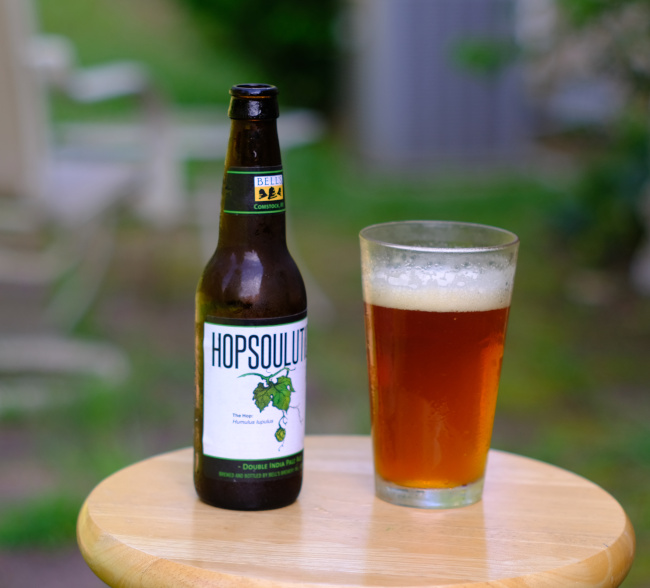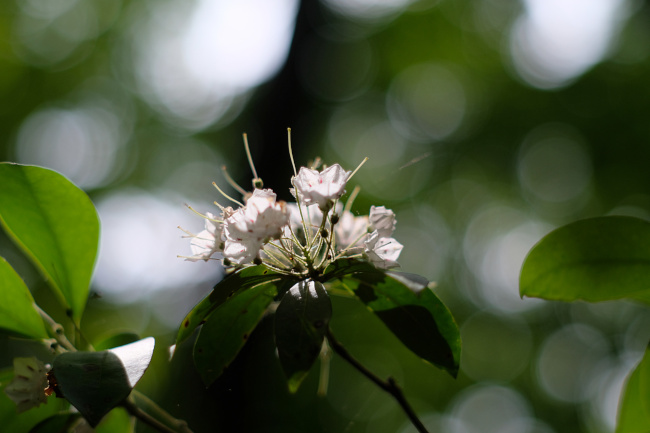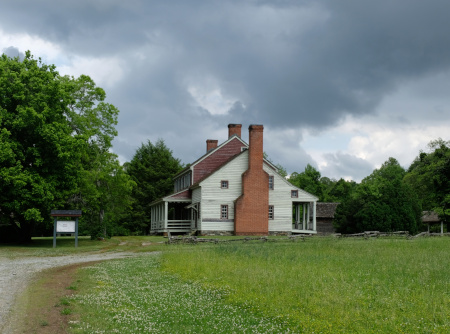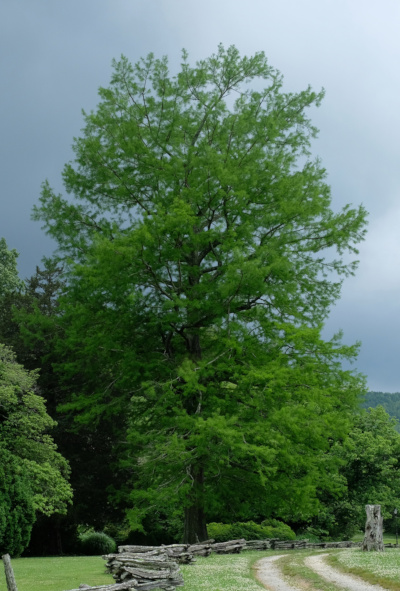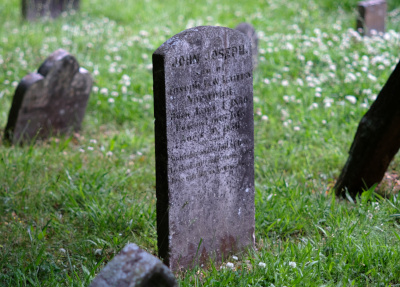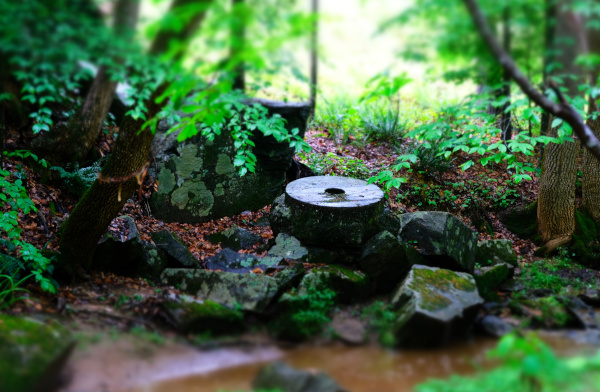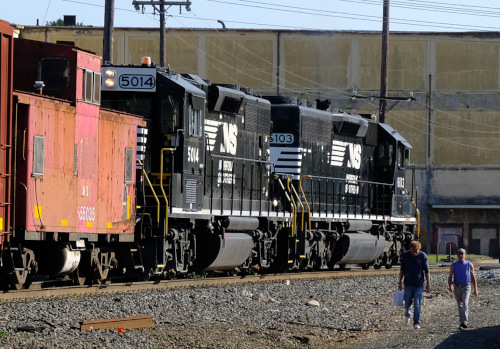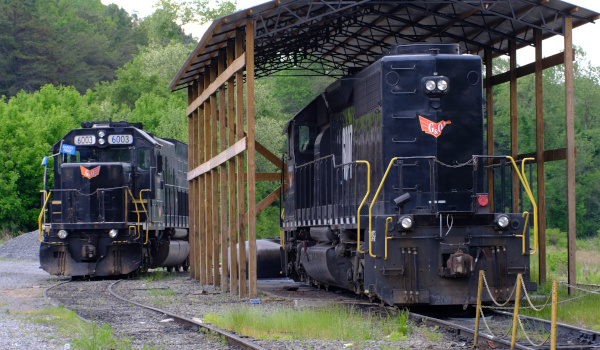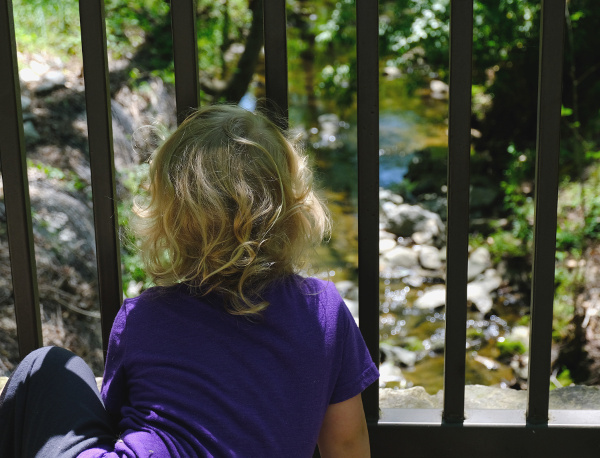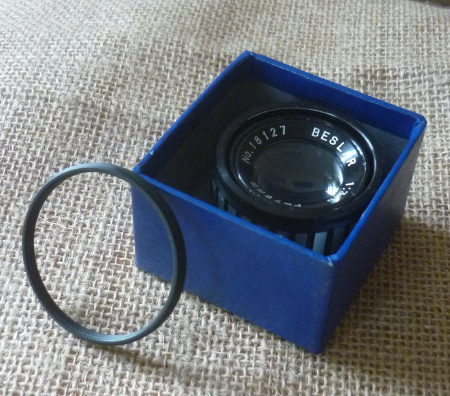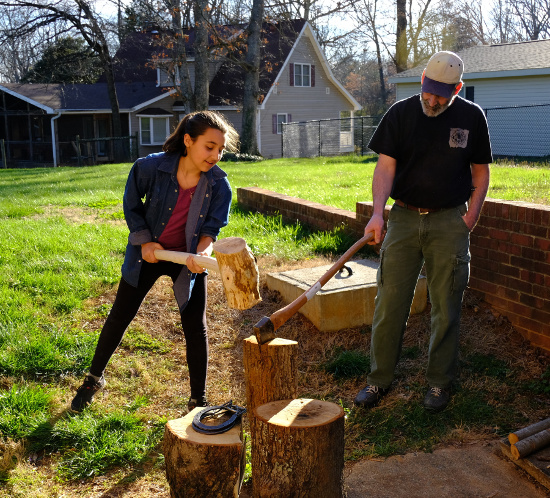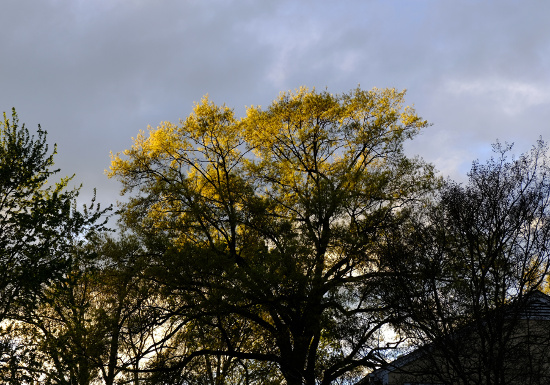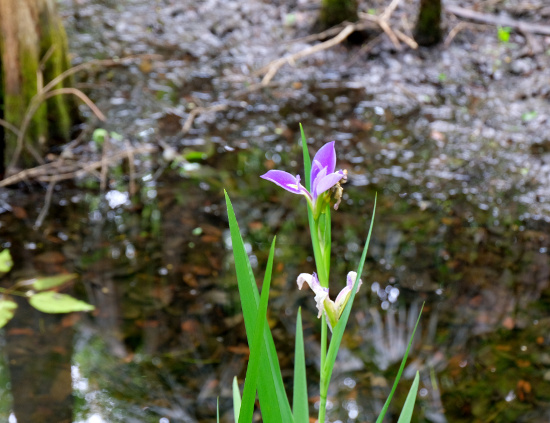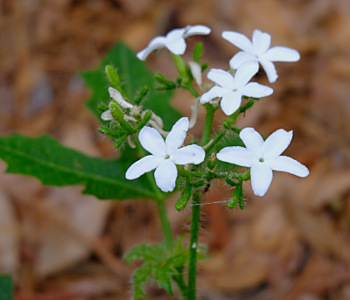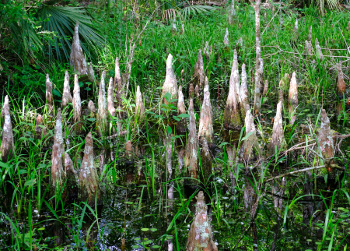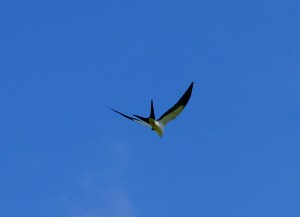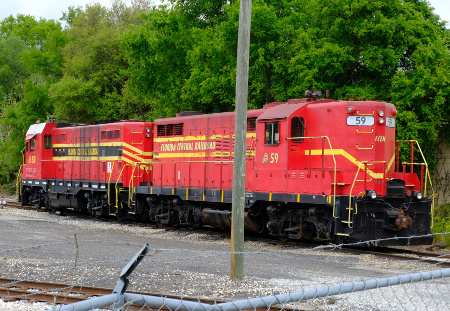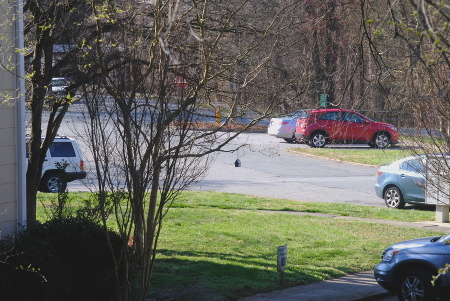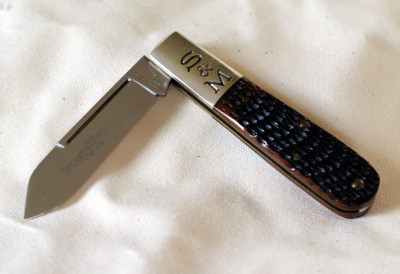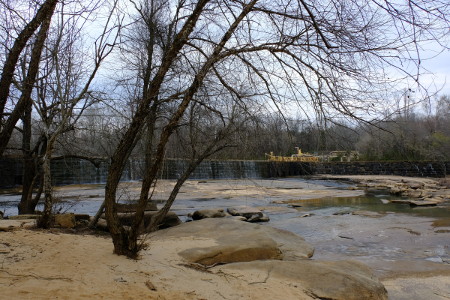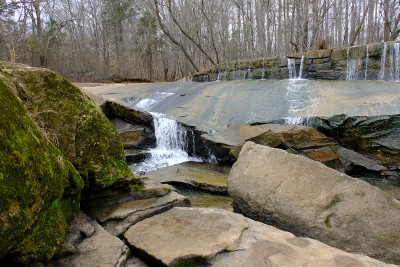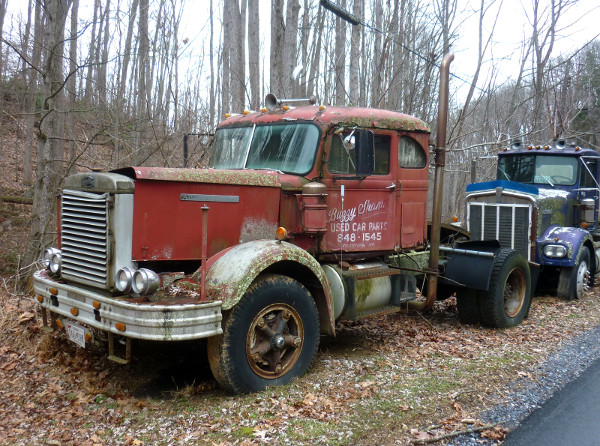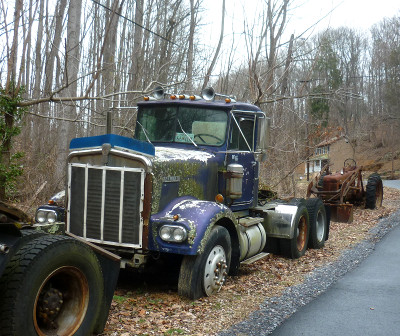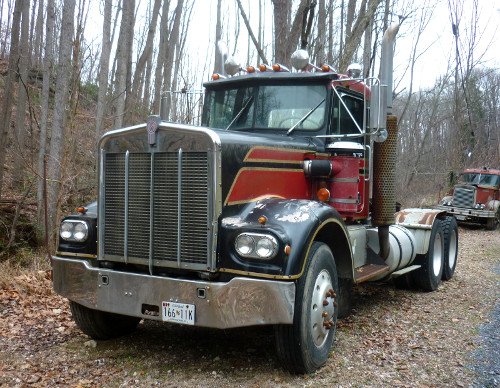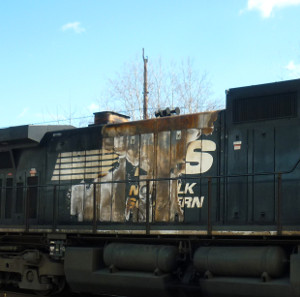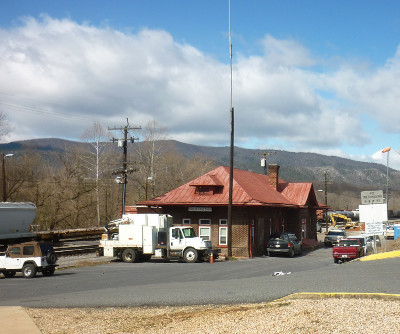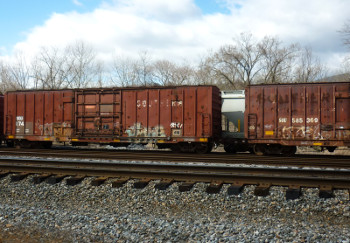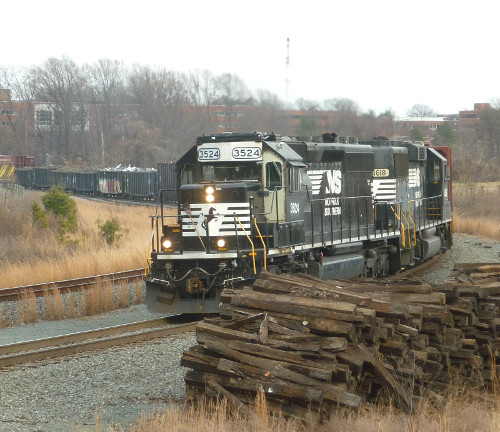Paul's Miscellany
All photographs by Paul M. Clayton unless otherwise noted. Click on a picture to see it larger.
This page includes posts from 3/1/18 through 8/31/18.
- 10/24/20 through today.
- 5/13/20 through 10/23/20.
- 10/01/19 through 5/12/20.
- 2/28/19 through 9/30/19.
- 9/1/18 through 2/27/19.
Rebel Rouser
Posted 08/28/18I found this Sam Adams Rebel Rouser IPA at the Food Lion in Edenton. Why does the label say IIPA? - it's a double.
Fujifilm X-T20, SMC Takumar 105mm f/2.8 at f/8, 1/680s, ISO 200.Cedar Box with Mulberry Inlay
Posted 08/08/18We built this box at The Woodshop at Joe's Basement for Levi to store his D&D stuff.
Fujifilm X-T20, SMC Takumar 35mm f/3.5 at f/8, 1/3s, ISO 400.It's Too Loud!
Posted 08/08/18Lars found the noise of the Amtrak diesels at the station stop in High Point overwhelming. Marie and I took the boys there one afternoon to watch the afternoon trains come through.
Fujifilm X-T20, SMC Takumar 55mm f/2.0 at f/4, 1/420s, ISO 250.The Crossroads of Agriculture and Industry
Posted 08/03/18The Ingredion (formerly Corn Products) plant in south Winston produces what is euphemistically called "ingredients" to use in making processed food. It takes corn, tapioca, potatoes and other vegetables and fruits and turns them into things like foaming agents, pulse proteins, prebiotic fibers, crisp texturizers and functional native starches - all things that every well-supplied industrial kitchen would need.
I find it interesting that the plant looks much like one I saw in Florida that produced orange juice. Petroleum refineries look much the same, but bigger. The maze of pipes, retorts and vessels is a characteristic of industrial refining - whether the raw material is corn, oranges or petroleum.
Fujifilm X-T20, SMC Takumar 35mm f/3.5 at f/8, 1/350s, ISO 400.Lack of Fluidity
Posted 08/02/18On the scanner, I heard arrangements for a freight to follow 75, the Amtrak Piedmont, south out of Linwood. After watching the passenger train cross the double-track bridge over the Yadkin, I drove south looking for a good spot to photograph the freight. I found what I wanted at the top of the long grade from the Yadkin River, behind the PCA plant near the Spencer town limits. After a while the train labored up the hill behind GE D9-44CW 9511 and two sisters. I drove ahead and watched the train veer off onto the Asheville line, and followed it through west Salisbury. An eastbound waited in a siding for a chance to enter the main for the trip to Linwood. I drove west to Barber and watched as 9511 and its train pulled past the diamond and stopped, then eased forward. Thinking the stop was just to throw a switch, I drove forward to try to get a picture of the train crossing the old bridge across the South Yadkin. The train hadn't appeared after 45 minutes, so I backtracked and discovered an eastbound stopped on the main in Cleveland, just west of the end of the long siding at Barber. With the main line occupied, there was no way that the westbound could proceed. I watched the eastbound notch out its engines as if it were preparing to move and then drop back to an idle. A few minutes later, it went through the same drill. Another mile and the westbound could have slipped around it on the siding, but as things stood, the Asheville line was plugged.
Back on the siding, I found 9511 and its train, headlights out and engines shut down. Traffic on the line to Asheville was showing a deplorable lack of fluidity.
Fujifilm X-T20, SMC Takumar 105mm f/2.8 at f/8, 1/750s, ISO 400.Birdsong Rewind Lager
Posted 07/28/18I prefer an IPA, but for a lager, this is good. Birdsong Brewing Company, Charlotte, NC.
Drinking the beer was fun, but making the picture was more fun. I backlit the subject, then placed bubble-wrap between the subject and the light source, which was light streaming in through a window. Then I placed wadded up red and blue cloth behind the bubble-wrap. Shot with my SMC Takumar 55mm f/2 and heavily processed in RawTherapee.
Fujifilm X-T20, SMC Takumar 55mm f/2 wide open, 1/60s, ISO 200.Sharpness and Color
Posted 07/27/18Sharpness and color. Lots of post-processing, but if it isn't in the image, no amount of post will get it out. Modern digital bodies are wonderful for recording the light that sterling old lenses transmit. Microprocessors extract the best that the recorded image has to offer. But first the photographer has to see it. Fujifilm X-T20, Super Takumar 35mm f/3.5 at f/8, 1/20s, ISO 800.
Super Takumar 35mm f/3.5
Posted 07/26/18I bought another old Takumar off ebay and it was delivered today. Asahi made the Super Takumar line from 1962 to 1971. While coated, they were superseded by the "super multi-coated" SMC Takumars with more advanced coatings, mainly to control flare. The optical formula of the 35mm f/3.5 remained constant from the predecessor Auto-Takumar of 1959 all the way through the early K-mount version built from 1975 to 1977.
Many will argue that in build and optical quality, the Takumars were a match for the best Leitz and Zeiss lenses of the era. 35mm Takumars cost over $100 back when they were new, the equivalent of around $500 today. They can be picked up for well under $50 today, in excellent working condition, with clean glass. A modern Fujinon 35mm prime can be bought new for $350 or so, a surprisingly low price, but still 7 times the cost of a used Takumar. The new lens is faster and probably a bit sharper corner to corner, but the main reason for the price differential is the auto-focusing. The Takumar must be manually focused. For the photographer brought up on auto-focus, this evidently is an insurmountable problem, but for "old hands" brought up on manual film SLRs it is trivial - especially on a modern body with focus peaking.
Focus peaking really is the breakthrough that makes the old lenses viable in the modern world. Let's face it, those of us who learned to focus a lens back in the pre-auto-focus era are not getting any younger, and our eyes are fading. Focus peaking is the crutch we need to keep us using the old Takumars, Summicrons, Nikkors and Sonnars of the 1960s.
The other big contributor to using old lenses on new bodies is the high ISOs that modern sensors can handle. Color film of the 1960s and 1970s topped out at ASA 200, but for the best work you wanted to use Kodachrome 64. Black & white allowed a bit more leeway, with even Tri-X at ASA 400 providing decent grain, and usably pushed to 800. But a modern sensor will resolve ISO 3200, even 6400, without getting too noisy. This makes it possible to stop down the old lenses and zone focus.
The 35mm focal length used on the Fujifilm crop sensor is the equivalent of 50-55mm in full frame, in other words what we used to call a "normal" lens. It is a good complement to my 55, 105 and 150mm Takumars. A 24mm Takumar would round out the set.
Fujifilm X-T20, Super Takumar 35mm f/3.5 at f/3.5, 1/170s, ISO 3200.
Heavy Processing
Posted 07/24/18I took this one back on June 1st while the azaleas were in bloom. I saved it in camera RAW instead of jpeg and just got around to processing it. The image was underexposed but still had an area of blown highlights in the top right, so it took some work to get a usable picture. First, in RawTherapee, I applied the packaged Auto-Matched Curve - ISO low to suit the ISO 200 that the image was made at and made a minor crop. Then I applied film emulation, Fujifilm Velvia 100 generic at 100%. The Velvia emulation always seems to darken the image and this one was already dark, so I applied a full stop positive of exposure compensation. Next I worked on fixing the blown-out top right portion with highlight compression and threshhold. There were some blacked-out shadows as well that I adjusted with shadow compression. Last thing in RawTherapee was to apply a gradient filter to tone down the top right area even more. I saved the image as jpeg and imported it into GIMP. Here I did another slight crop and scaled the image to finished size. Finally I applied a good stiff dose of unsharp mask, gaining sharpness at the expense of some slight noise.
All the work made a big difference. I wouldn't have been able to do this if the original image had been saved as a jpeg. That's the advantage of camera RAW. The disadvantages are that the unprocessed images are huge; most pictures would have been just fine with the camera jpeg processing, saving a lot of work (not a real problem, because the camera can be set to output both, at the cost of even more disk space); and Gwenview won't display them, you have to use a specialized image viewer like Geequi.
Fujifilm X-T20, SMC Takumar 55mm f/2, 1/420s, ISO 200.
North of Mocksville
Posted 07/20/18Here's an "H. Reid" style shot - elderly engine hauling a few cars through a rural southern landscape - updated for the 21st century.
Fujifilm X-T20, SMC Takumar 55mm f/2 at f/8.0, 1/320s, ISO 200.
Ubiquitous
Posted 07/19/18Another of Norfolk Southern's ubiquitous SD40-2s. I found 3504 in the least likely place today, on the old Winston-Salem - Mooresville secondary. This line sees no through traffic (it hasn't in 30 years - there is a condemned trestle on the northern end), and precious little local traffic. Evidently a train is dispatched "as needed" from Barber on the Spencer-Asheville line to service any business that turns up south of the trestle. I haven't seen a train north of Barber on this track in many years, but today, passing through Advance, I glanced down the track and saw activity. It proved to be - what else? - an SD40-2 and three empty gons trundling southward at 5 to 10 miles per hour. With 1,000 hp per car, the engineer was alternating between idle and run 1 trying to keep his speed down. The low speed was in deference to the ancient 39 foot jointed rail and the numerous grade crossings. At Bixby, the train came to a dead halt and a crewman got down and flagged the gated crossing, perhaps because of the adjacent propane distributor. I would have liked to follow the train all the way to Barber, but it was getting late, so I regretfully turned for home at Mocksville.
What about the line south of Barber? There is a large Southern States feed and seed elevator that gets regular service. Earlier in the day I had seen GP38-3 (Norfolk Southern rebuilt GP50) 5833 and SD40-2 6102 working the facility before heading south to Mooresville.
I get my roster information from Chris Toth's "NSDash9.com" website.
Fujifilm X-T20, SMC Takumar 55mm f/2 at f/8.0, 1/420s, ISO 200.
Why I Love Modern Digital Bodies
Posted 07/17/18Focus peaking made it possible to focus in dim light, and image stabilization made it possible to hand-hold this shot with the equivalent of a 75mm lens at 1/20th of a second. The APS-c sensor recorded the image at ISO 800. There would have been no reason to even attempt this picture in film days. Why? First, it would have been difficult to attain focus, either manually or with an early autofocus camera. Second, the rule of thumb for film was not to shoot under the reciprocal of the lens length - hence, for a 75mm lens on a 35mm film camera, 1/75th second. Third, no slide or color negative film came close to ISO 800, and even black and white had to be pushed in development to attain that speed. A superfast lens shot wide open would have helped, but the depth of field would have been too narrow to take in the whole subject. The only way to get this shot would have been to put the camera on a tripod. Otherwise, it couldn't have been done. And I didn't have my tripod with me this day.
Fujifilm X-T20, SMC Takumar 55mm f/2 at f/2.8, 1/20s, ISO 800.
Empty hoppers at Bluefield WV
Posted 07/14/18Another picture from 7/13/18, this one of westbound empty hoppers entering the yard at Bluefield WV. The leading unit, 9680, a GE C40-9W, was built in March 2001. Trailing is 1131, an EMD SD70ACe built in November 2014. The two units together produce around 9,000 horsepower, enough to bring a long train of empties up the winding N&W grade along the East River from its confluence with the New at Glen Lyn VA to Bluefield.
Fujifilm X-T20, SMC Takumar 55mm f/2 at f/8, 1/90s, ISO 200.
Stack Train at Ada WV
Posted 07/13/18A Friday the 13th visit to the Narrows - Bluefield trackage of Norfolk Southern netted this shot of an eastbound stack train passing through the unincorporated community of Ada in Mercer County, WV. My old train-watching buddy Pete used to fret over the potential for the merged railroad to "Southernize" the signal system and replace the old N&W position-light "target" signals with searchlights, but the old style outlived him, perhaps for the best. Only recently have they been replaced with, not Southern-style trackside searchlights, but this completely new system.
This picture demonstrates the virtues of the Fujifilm X-T20 body in a backlit situation. 1/3rd of a stop positive compensation gave the APS-c sensor enough light in the shadows to preserve detail, while the sensor still captured color in the highlights. Post processing in RawTherapee started with applying a generic low ISO profile as packaged with the software, some highlight reconstruction, then a light touch of Velvia film emulation. Afterwards in Gimp, I straightened the composition, made a slight adjustment to the gamma level and a good hard dose of unsharp mask. Try clicking on the picture twice to make it full size, and look at the detail on the face of EMD SD70M-2 2717.
Fujifilm X-T20, XC16-50 at f/6.4, 1/125s, ISO 200.
Pentax X70
Posted 07/03/18Here we have another of Norfolk Southern's ubiquitous SD40-2s at the Winston-Salem engine servicing facility. 3570 is one of 80 SD40-2s acquired from Helm Leasing in 2013 and 2014, originally built in 1980 for Burlington Northern. Norfolk Southern operates about 250 of SD40-2s. EMD produced close to 4,000 of these locomotives between 1972 and 1989, making it the company's best selling model. Coupled behind 3570 is C40-9W 9287, built by GE. Norfolk Southern got the whole production of these locomotives, all 1,090, between 1996 and 2004.
The picture was taken with a Pentax X70. This camera is not a simple point-and-shoot, nor a full-fledged DSLR. Bridge cameras of this type were marketed for a while but were driven out, along with the point-and-shoots, by cell phone cameras. These days there are high-end DSLRs and phone cameras with not many other options. The old cameras like the X70 do have some uses - they offer more configuration options than a point-and-shoot, and they are simpler and more adaptable than phone cameras. The complexity of interchangeable lenses is obviated by having one non-removable "superzoom", a lens that covers the whole range of focal lengths from moderate wide-angle to long telephoto. The cameras are small, light and cheap. I find my X70 to be a good trainer - a young user can learn about setting shutter speed and aperture, using a digital zoom and autofocus, shooting macro, and using flash to fill in shadows. So for the beginning photographer, the bridge camera is easier to use than a DSLR while still providing lots of opportunities to control the image, and, as Faith put it, "it looks like a real camera". Don't underestimate the value of the last point - it's important to the young novice. See Ming Thein, "The Best Value in Photography Today".
Under perfect conditions, with shutter and aperture in the middle - 1/160s, F/8, low ISO of 64 and a static subject, the 12Mp sensor is capable of recording exceptional image quality. At the ends of the exposure range with high ISO, expect a lot of noise. And don't lean on the autofocus too hard, it labors trying to keep up with a moving subject. Still, most of the time the image quality will be acceptable.
Now and then, I get a shot like the one of SD40-2 3570. The Pentax X70 is a crop-sensor camera with a superzoom of 4.6 - 110mm, f/2.8-5. The picture was taken at 11mm, 1/160s, f/8, ISO 64. Note that the equivalent zoom range in 35mm would be 26-624mm. 11mm is the equivalent of around 60mm full-frame. This is what is known as OOC, in other words straight out of the camera, no post-processing. Try clicking on the image twice to see it at full size.
Bees are a challenge, small and fast-moving. The bee picture was taken full autofocus and exposure, and was the only one of fourteen images worth keeping. For the most part, the autofocus missed. But when it got one right, the sharpness and color were fine. I'm not sure what caused the flare in the foreground. This one was taken at 42mm, 1/640s, f/4.5, ISO 400.
Bear & Son Cutlery
Posted 07/03/18With the recent demise of Queen, who's left? Case, of course - W.R. Case & Sons has built a franchise on a cult of tradition. And beyond all expectations, Utica has held on, building a line of Kutmaster utility knives - Barlows, Electrician knive, Pruners - alongside their flatware and kitchen knives. Then there is Bear, plugging along with a line of traditional folders alongside their modern-day tacticals, down in Jacksonville AL. I'd put money on them being the last name standing.
The picture was taken in 2011 with my Panasonic Lumix DMC-FS7.
Imperial Fisherman's Knife
Posted 07/01/18I bought this Imperial 856DE Diamond Edge fisherman's knife in 2011. The old Imperial Knife Company of Providence RI was for a time the largest knife producer in the United States. Imperial bought Schrade in 1946 but let it run as a separate division. Eventually all production was consolidated and the name changed to Imperial-Schrade. The company joined with all the other American knife makers in a slow decline. Knives with the Imperial tang stamp were made until 1988, with the Schrade stamp until 2004. In that year, the last Imperial-Schrade plant was closed. Some time later, the Schrade name was sold and is now used to stamp knives made in China.
The Diamond Edge line was made during the 1970s and represented the high end of the spectrum for Imperial. I found the knife on Ebay and paid $7.51 shipped. The recession years were a great time to buy knives. Prices were rock-bottom and many interesting old items were coming to market. It was a great time to build a collection of these relics of the American industrial age.
I took this picture with my Panasonic Lumix DMC-FS7 point-and-shoot camera in 2011. When this camera was new, the image quality was hard to believe. The Leica DC Vario-Elmarit lens probably had a lot to do with it - smart move, Panasonic, partnering with Leica. The lens, the sensor, the easy to hold form factor, the programming - all worked together to make for an exceptional little camera. After many years of use, the lens is picking up some scratches, pixels are popping, and the zoom works intermittently. But I'll never say I didn't get my money's worth - $115, plus $21 for the SD card, in 2010. I'd buy another tomorrow, if they still made them. Try clicking on the picture - then, when it resolves, click again to see it full size. I think you will be impressed.
Bee
Posted 06/30/18The honey bees are working the flowering mint in the front yard, and they are so blissed out on nectar that they are oblivious to the photographer looming over them. I set up my Tak 55 reverse mounted on the X-T20 and took a few shots. They were disappointing, but on consideration I decided that, with the reversed lens, at f/2.0 the depth of field was so shallow that not all of the bee was in focus. So I stopped down to f/5.6 and got something better.
Fujifilm X-T20, SMC Takumar 55 f/2.0 at f/5.6, 1/140s, ISO 800.
1967 BSA 650 Spitfire
Posted 06/28/18To my eye, this is the perfect bike. I photographed it at British Motorcycle Day in Olney, Maryland May 21st, 1989. That's a BSA Rocket 3 behind the Spitfire.
The full set of 22 slides from British Motorcycle Day is here.
Focus Peaking
Posted 06/27/18My Fujifilm X-T20 has focus peaking and I have been experimenting with it. I can focus my Takumars, even with my tired old eyes, but the focus peaking makes it much faster. Here's how it works. There is a three-way switch on the front of the camera body, with options for M, C and S - manual, or two auto-focus choices. Setting the option to manual allows direct manual control using the focusing ring on the lens - just like all cameras worked back in the days before auto-focus (Pentax introduced the first mass-produced auto-focus SLR in 1981). In the camera AF/MF Settings Menu, under MF Assist are options to use either a split screen or focus peaking. Choose focus peaking, either white, blue or red, and the camera is set.
The split screen should be familiar to anyone who has used old film cameras since it was a common focusing aid. Focus peaking is a feature of modern digital cameras. I don't know the technicalities of how it works, but the effect is to take the sharpest area in the viewfinder - in other words, the area in focus - and pixelate the color chosen to give a visual indication of the area in focus. The first time I saw it I thought something might have gone wrong with the camera, because the effect was kaleidescopic (I was using red peaking on a crepe myrtle covered in blossoms). But once I used it a time or two, I understood what the camera was telling me. I could see the area in front of or behind the desired point of focus pixelate, and as I turned the ring on the lens, suddenly the area I wanted would pixelate and I knew I was exactly in focus. I don't know how well it would work for a moving subject, but for something like the squirrel, keeping still but likely to dart away any second, the focus peaking allowed me to get focus quickly and take the shot while I had the chance.
The focus assists are of most use with manual lenses like my old Takumars, but will work with auto-focus lenses in situations where the focus isn't where the photographer wants it. Same drill, just set the three-way switch to M and focus with the ring on the lens, or if there is no ring, whichever knob has been assigned that function.
Fujifilm X-T20, SMC Takumar 105mm f/2.8 at f/2.8, 1/58s, ISO 400.N&W Empty Hoppers at Ingleside
Posted 06/23/18Check out this sequence of Norfolk & Western empty hoppers westbound near Ingleside VA, April 11th, 1981. Back in the day, this was one of the great train-watching locations in southwest Virginia. The ex-Virginian, a low-grade route for heavy loaded coal trains, came down off the mountain on some prodigious high bridges and paralled the N&W from just east of Ingleside to near Narrows. The N&W was used for westbound empty hoppers and merchandise trains in both directions. Roads closely followed the N&W from Bluefield all the way to Narrows and beyond.
Here, six units led by SD45 1814, built in 1970 and the last SD45 purchased by the railroad, hustle a long hopper train back to the mines.
Virginia was the last state to mandate cabooses on all road trains. The law was repealed in 1988.
Clinchfield Coal Train
Posted 06/21/18Clinchfield coal train southbound just south of Pool Point Bridge (Scaggs Hole VA), August 1987.
BSA
Posted 06/20/18My friend Rusty built several BSA 650s, including mine. The one in the picture was Dale's, if I remember correctly. The picture is a scan from a slide that I took back in the mid-1980s. Ron Hudnell lent me his Epson photo and slide scanner to do a PATH project, and I am taking advantage of having it around to do a few of my own pictures. Amazing how good these 30 year old slides look.
Dick and Willie
Posted 06/18/18In 1882 the narrow gauge Danville & New River Railroad completed a line from Danville to Martinsville, Va. Two years later, the terminus had been pushed west to Stuart. The financial stress of construction led to bankruptcy, and the railroad was reorganized in 1891 as the Danville & Western.
Third rail was added in stages, and by the early 1900s the line from Danville to Martinsville was dual gauge. Soon after the narrow gauge rail was ripped out and the whole line converted to standard gauge.
The line from Fieldale, just west of Martinsville, extended through the rural hamlets of Preston, Critz and Patrick Springs to reach Stuart. This was the last completed and first abandonded section of the Danville & Western. Traffic must have been dismal, becaust the line came up in 1942, in the middle of the war, when every transportation sinew was strained. Evidently the scrap steel was worth more than the production coming out of rural Patrick County.
A branch off the Danville and Western ran down to the prosperous textile towns of Draper, Leaksville and Spray. That proved to be the longest-lasting segment of the railroad, surviving as late as 2014. By that late date, the mills were long gone, but there was a Duke Power coal plant in need of service. When the plant converted to natural gas, there was no need for the railroad any more. Incidentally, the towns of Leaksville and Spray consolidated as Leaksville-Spray, and later joined with Draper to form Eden. I think it would have been more apt to name the new town Leaksville-Draper-Spray, or maybe Leaksville-Spray-Draper, but who am I to say?
Through the late 1800s and most of the 1900s, Patrick and Henry Counties were major tobacco producers, and in 1874 a local farmer, R.J. Reynolds, rode south from his home in Rock Spring Plantation, near Critz, to set up business in the town of Winston. There he founded what would become the enormous tobacco company that bore his name. He and his family, along with the town, which later merged with the neighboring community to form Winston-Salem, all accrued great profit and great cost from the production of cigarettes. For decades the Reynolds family were the wealthiest people in North Carolina, and the city one of the most cultured and prosperous. But on the other side, there was the rampant cancer that killed many of the Reynolds family, including R.J., as well as many citizens of Winston-Salem.
Dan Robie's interesting site WVNC Rails has an article about the Danville & Western that is well-worth reading. Dan is a good historian and he covers a lot of material that otherwise would be hard to find. In particular, he explains the convoluted corporate structure that eventually resulted in the Danville & Western being absorbed into the Southern. The definitive treatment might be a book by Larry W. Hopkins by the name of "The Dick and Willie", promised by Tar Heel Press but so far unpublished. Let's hope it sees light, and that the local library gets a copy, since the price is projected to be $55.00.
I visited Patrick and Henry Counties, VA in June 2018 to track down what I could of the old Fieldale to Stuart line, abandoned now for 76 years. It's a beautiful drive of about 50 miles from Winston-Salem up Highway 8, through Danbury and the rural countryside. The winding two-lane road limits average speeds to 45 mph or less.
Anyone who has spent much time on the land will tell you that scars, especially in rural areas, are slow to fade. I expected to find traces of the old railroad, and I did. I needed some clues as to where to look, and I found them in a Rand-McNally commercial map of Virginia, published in 1924 and in U.S. Geological Survey quadrangles from the 1960s. The railroad ran from Fieldale west through Koehler, Waller, Johnsons, Preston, Spencer, Penns Tank, Stella, Critz and Patrick Springs before terminating in Stuart. All these towns showed up on the 1924 map, most of them did not by the 1960s. Still, there were plenty of hints on the land, and I was able to visit the sites of most of them.
What's left of the roadbed of the Stuart extension? Surprisingly, quite a lot. Arriving in Stuart, I turned east along the Mayo River and picked up the old railroad grade running along Commerce Drive. The town has converted the roadbed, which follows the pristine upper Mayo River, into a park. The roadbed is a paved jogging and biking trail with tables and benches overlooking the water. A preserved caboose in not-too-bad shape anchors the intown end of the trail. Even though only a few of the oldest residents can remember when the Danville & Western trains came to town, the whole area near the river is known as "the Depot".
Stuart is an immaculate, beautiful little town in the foothills of the Blue Ridge mountains, population 1,408 as of the 2010 census. It is by far the largest town in the county and seat of government. It serves a hinterland of some 20,000 people in the surrounding areas, so it is not so depopulated as some of the places in the state. Nearby Bland County, for instance, has a population of around 6,000, and the county seat, 400. It's clear that the local people have worked hard to maintain their community. Sadly, the big Stuart Forest Products plant and the local hospital both closed in the last few months, so the future is not promising. The town is too far from anywhere to become a bedroom suburb, and without a hospital it won't attract many retirees. I have visited this town many times over the last 30 years and never thought it could sustain itself, but I've been wrong before and I hope I am again.
I drove east out of Stuart, keeping an eye open for Patrick Springs but following the river, since I thought it likely that the railroad might have opted for the easy water-level grade. That turned out not to be the case, as I crossed the river and found no trace of a grade. I turned back up the hill and found the Patrick Springs Post Office. My experience is that country post-mistresses generally know more about their communities than anyone else, so I went in, patiently waited while a local woman put in a change of address, and then introduced myself. We had a pleasant discussion, along with the local woman, and before I left I had the information that the railroad grade was just up the hill, and to turn right on Dogwood Road and follow it to Critz, pronounced with a long "i", which wasn't much to speak of but there might be an old railroad building there.
Patrick Springs is a CDP (Census Designated Place) around Highway 58, the main trunk route across the southern tier counties of Virginia. Overbuilding has eradicated most relics of the past. I didn't find any old buildings or structures in the area. Even so, before I got to Dogwood Road, I found clear evidence of a railroad grade - a narrow street by the name of "D&W Lane". At first I was sure that the street itself was the old roadbed, but then I spotted an ancient stone culvert close to the side. It was far too heavily built to be for a country road, surely that was the railroad. But on second thought, perhaps there was a siding here in Patrick Springs, and there were two tracks. Hard to say.
There are tantalizing mentions of a Patrick Springs Hotel and Spa that was once located nearby, but so far I have not been able to locate it. The original post office serving the area, established in 1857, was named Spabrooke, which suggests the hotel was in operation even at that early date. The post office name was changed to Patrick Springs in 1859. For a time in the late 1800s the post office was closed and all mail was handled through nearby Shuff Post Office. Later, Patrick Springs was reopened. Shuff Post Office is now long gone, consolidated with Patrick Springs in 1925. Essentially, Shuff was legislated off the map as the authorities decreed that the Post Office, train station and whole locale were to be known as Patrick Springs.
I followed meandering Dogwood Road across the Virginia countryside and eventually came to Critz. The little community has an elementary school, a post office and a small store. Once it was a more substantial town, as there were several old buildings in various stages of decay along the road. One had the look of an old railroad freight house, and I thought I could make out the remnants of a railroad grade behind it. Walking a tangent along the grade, it soon resolved itself into Glenn Lane, a narrow road running back into the woods, straight and level. A railroad grade if I ever saw one. Since Glenn Lane looked more like a private driveway than a county road, I didn't follow it. The local people have absorbed the roadbed back into their own property, perhaps not by the statute law, but certainly by the common law. After taking a few pictures of the perhaps old freight house and walking a short way on Railroad Lane, across the street, I exited Critz to the east and made for Stella.
After a few miles I cut Stella Road and made a right, downhill toward the creek bottom. Stella used to be a timetable station but as far as I can tell, there is nothing whatsoever left. Just short of the bridge over Mill Creek, I turned onto Dick & Willie Road and proceeded down a long, straight, cut-and-fill grade through beautiful wooded terrain. How did I know to turn on Dick and Willie Road? As you probably guessed, the local people nicknamed their little railroad "The Dick and Willie". It was common practice, in the days when railroads were the only link other than rutted wagon trails to the outside world, to nickname your railroad. Nobody makes up nicknames for the local interstate, but every country railroad had one. Think of ET&WNC's "Tweetsie", Missouri & Illinois' "Mike & Ike", or a personal favorite, Sumpter Valley's "Polygamy Central."
Eventually the nice grade petered out and the road made a hard left and switchbacked up the ridge, to come out in a massive clear-cut. Across the clear-cut I ran into Highway 58, which I followed east toward the next spot on the D&W map, Spencer.
Spencer and neighboring Penns Tank appear on the 1924 map as sites along the D&W. The modern-day community of Spencer still exists along Highway 58, but Penns Tank is gone. A Google search turns up nary a hit for the old location. However, the Spencer-Penn Center in the beautifully restored old school that served the area preserves the name if not the memory. As far as the Dick and Willie goes, there's no evidence to be found in Spencer.
The last location on my agenda was Preston, another of the old station sites. I knew I would find the railroad here, because even a modern-day Google map shows D&W Road, Dick and Willie Avenue and Station Drive clustered together. USGS quadrangles from the 1960s show the marked abandoned railroad grade. D&W Road extended west a couple of miles before entering private property and Dick+Willie Avenue went east about a mile before doing the same. The roadbed to the east is clearly marked on old quadrangles, but my time had run out, so I left that exploration for another day.
The Stuart extension was completed in 1884 and abandoned in 1942. It has been gone for 76 years, far longer than it existed. Even so, the impression it left on the land and people is still plain to see.
Here are links to USGS Quadrangles with my best estimates of the D&W grade marked (big files - may take a minute to load):
Sam Adams Summer Ale
Posted 06/06/18After spending a few hours bringing the Atomic 4 out of hibernation and cleaning the boat, I indulged in a couple of these light, bubbly summer ales. Fujifilm X-T20, SMC Takumar 55mm f/2.0 at f/2.8, 1/4000s, ISO 200
Hopsolution
Posted 05/31/18A double IPA from Bell's Brewery in Kalamazoo and Comstock, MI. If you haven't tried it, file it for next year - they only brew it in April. Fujifilm X-T20, SMC Takumar 55mm f/2.0 at f/2.8, 1/600s, ISO 200
Yep - They Did It
Posted 05/30/18Weezer covered Toto's "Africa".
Mountain Laurel Blooms
Posted 05/24/18On a day-hike high up the flanks of Sauratown Mountain we found Mountain Laurel, Kalmia latifolia, in profuse bloom. Fujifilm X-T20, SMC Takumar 55mm f/2.0 at f/2.0, 1/2900s, ISO 400.
Upper Yadkin Valley
Posted 05/19/18Geographers will tell you that the Yadkin River heads up on the east side of the Blue Ridge near Boone and flows into the sea, as the Pee Dee, at Georgetown, S.C. It has been said waters from three rivers can be traced back to a golf course in Blowing Rock - the Yadkin, the Catawba and the New. Whether this is true or not can be debated. Regardless, it makes for a good story.
Far below the Thunder Hill Overlook on the Blue Ridge Parkway the Yadkin River flows southeastward, eventually pouring out into the foothills country near the town of Lenoir. At Happy Valley the river bends to the northeast and flows down a broad valley past Wilkesboro, eventually turning east and crossing into the Piedmont near Pilot Mountain. From there the river turns southeast and roughly follows that track all the way to the sea.
US 321 runs down off the mountain from Blowing Rock. Near the community of Happy Valley, NC 268 crosses 321 and proceeds east down the Yadkin Valley. This road follows the river all the way to small community of Burch in Surry County, where it veers away to the northeast and eventually stubs into NC 89 north of Hanging Rock.
Happy Valley was the home of the Patterson School, formed in 1909 by the Episcopal Church on a block of land bequeathed by former State Secretary of Agriculture William Patterson, and closed due to financial difficulties in 2009. The early history of the institution has faded into the mists of time, but its recent history revolved around basketball. Like some other small mountain prep schools (Oak Hill Academy immediately comes to mind), Patterson found a niche in preparing at-risk inner-city youth for athletic careers. At least one graduate, Hassan Whiteside, achieved a journeyman NBA career, and several alumni made it to the European leagues.
On closing its doors in 2009, the school deeded the campus to Caldwell County, which is making an effort to use the property for science and agricultural education.
William Lenoir was a prominent man in colonial and post-colonial North Carolina. The town of Lenoir, in Caldwll County at the headwaters of the Yadkin River, and the County of Lenoir, on the middle reaches of the Neuse River, were both named for him. He fought at the battle of Kings Mountain, and wrote an articulate and detailed account of the fighting that is the foundation for all scholarship of the affair. Later he served as a State Senator, eventually rising to the position of speaker of that august body. Before the Revolutionary War, Lenoir built Fort Defiance on the banks of the upper Yadkin River as a safe haven for the European settlers as they wrested the land away from the Cherokees. After the war, he built his home at the site of the fort.
General Lenoir called the house after Fort Defiance, and lived there until his death in 1839. Seven generations of descendents made the house their home until it was sold for preservation in 1965. Currently a local non-profit owns the house and adjacent grounds. The day I visited, the house was not open for tours, because they were preparing it to rent out that night for a local shindig. That's what they have to do to get the money to keep the buildings maintained. One of the staff, A.J., took a few minutes away from swabbing out the restrooms to tell me some of the story of the property. I was especially interested in the enormous bald cypress behind the house. According to A.J., the documentation suggests that General Lenoir brought the tree from the coast in around 1816 and planted it to see if it would grow in the upper Piedmont environment. And grow it did - now it is an enormous, very healthy tree. Nearby is another huge tree planted around the same time, a European chestnut. All the old American chestnuts are of course long gone, due to the chestnut blight, spread from Asiatic chestnuts in the early 1900s. The house itself is probably built of chestnut, which would help explain its survival for over 200 year - the wood of chestnut is one of the most durable and rot-resistant.
The Lenoir family and its scions accumulated vast land-holdings in the upper valley. They also allied by marriage with several other prominent North Carolina families, including the Joneses of Wilkes County, the Moreheads of Guilford County and the Frieses of Forsyth County. Seven generations of descendents were buried at the little cemetery at Fort Defiance. The family has dispersed, and the last two direct descendents still in the area will be buried at Fort Defiance, then the cemetery will be closed to future interments.
William Patterson, grantor of the bequest that started Patterson School, was a great-grandson of William Lenoir. The land comprised the bulk of the plantation, "Palmyra", that General Lenoir started developing before the Revolutionary War.
NC 268 continues downriver, past the country store at Ferguson, past the Kerr Scott Reservoir, past the private aviation Wilkes County Airport, and into the provincial twin cities of Wilkesboro and North Wilkesboro. Here ends the upper Yadkin Valley, as the river debouches into the wide, straight lower valley. The upper valley is intensely rural, the river is narrow and swift-flowing, and the shadow of the Blue Ridge looms to the west. The lower valley is still agricultural, but spotted with small towns that once used the waters of the river to power manufacturing concerns. The river is much wider and carries more water as it picks up tributaries - the Roaring River, the Mitchell, the Ararat. The Yadkin Valley ends as the river flows out into the Piedmont southeast of Pilot Mountain.
Millstone
Posted 05/16/18This ancient millstone rests on the bank of a small creek in Surry County.
Velvia film emulation provided the oversaturation. I hand-held the shot in very low light and applied a little post processing - a minor level adjustment and light cropping. Fujifilm X-T20, XC16-50 f/3.5-5.6 at 50mm, f/5.7, 1/14s, ISO 800.
Norfolk Southern Switch Detail
Posted 05/10/18Norfolk Southern leased their trackage from Rural Hall to North Wilkesboro and Mount Airy to a third-party operator but kept the line as far as Rural Hall for themselves. The current operator from Rural Hall north, Yadkin Valley Railroad, has trackage rights from Rural Hall to Liberty Street Yard in Winston-Salem to do interchange, but Norfolk Southern services all the industries along this section. Weaver Fertilizer gets cars on a regular basis. WestRock's North Point Blvd. plant has a siding, as does a Fedex facility nearby. And of course, the circus train parks along Indiana Avenue when it is in town (all up in the air now that Ringling Bros. has closed down). So Norfolk Southern has enough business to run a local out the line on a regular basis.
The track used to be part of the Southern and trains originated out of the old Southern yard in downtown. Now that everything runs out of Liberty Street, the local has to back out of the yard and then proceed north toward Rural Hall. At the end of its run, the engines must run around the train to lead it back to Winston, then back into Liberty Street. The numerous back-ups may be why the run still frequently sports a caboose.
Norfolk Southern has kept most of their EMD Dash-2 engines even as they pass 40 years in service. SD40-2 6103 was built in 1975, and GP38-2 5014 in 1972.
Yadkin Valley Railroad, a subsidiary of Gulf & Ohio, operates the lines from Rural Hall to North Wilkesboro and Mount Airy. It has trackage rights into Liberty Street Yard in Winston-Salem for interchange. My understanding of the current mode of operation is that a set of engines based at Liberty Street picks up all interchange traffic and hauls it to Rural Hall. It drops any business for Mount Airy and continues on to Roaring River, where it turns back. The line onward to North Wilkesboro hasn't seen any traffic for at least ten years. Any traffic for Mount Airy is made up on an as-needed basis and an engine set based in Rural Hall works it.
The Yadkin Valley Railroad keeps a tiny open-air maintenance facility at Donnaha on the line up the Yadkin River to North Wilkesboro. Donnaha doesn't even qualify as a town, as it has no Post Office. You wouldn't even notice it except for the railroad tracks crossing the road and the engines parked nearby. Donnaha's claim to fame is that it has a store that exists in a symbiotic relationship with a popular restaurant across the river in Yadkin County. O'Henry's has live bluegrass music on the weekends and is a cult locale among fans of the genre. Until recently Yadkin County was "dry", no alcohol sales, but an old tradition known as "brown-bagging" was allowed. In other words, BYOB. So patrons of O'Henry's drove across the river to pick up a six-pack. The little store was long known as "The Smokers Welcome" but gave up that charming moniker for something less memorable. I must admit that I bought more than one pack there, and beer as well, back in the days when Susan and I were given to lazing away hot Saturday afternoons on a sand bank along the river at Seven Islands Park.
On a recent visit, I found two engines at the Donnaha facility. SD40-2 6007 was partly under the shed and looked to be operable. SD40T-2 6003, former SP tunnel motor, looked to be out of commission. The dynamic brake fans were removed and plated over (I found the original dynamic brake cowling in the weeds nearby), and the rear louvers revealed an empty carbody.
Picture of Ursa
Posted 05/06/18My young friend Grace is proving to be quite an artist, as this acrylic drawing of her grandmother's new puppy shows. The picture was exhibited at her school for several months before she finally brought it home.
Lars at Bicentennial Garden
Posted 05/03/18We visited two gardens in the neigboring town early in the day, before it got too hot.
Fujifilm X-T20, XC16-50 f/3.5-5.6 at 42mm, f/5.7, 1/500s, ISO 400.
Fuji Glass
Posted 05/02/18My only experience with Fuji glass has been using the kit lens that came with my X-T20, the XC16-50 f/3.5-5.6. If the results I have gotten with this lens are any indication, their primes must be incredible.
Fujifilm X-T20, XC16-50 f/3.5-5.6 at 16mm, f/4, 1/70s, ISO 200.
Spruce Needles - 3
Posted 05/01/18I went back to the spruce tree for a few more shots this morning, with a 55mm Takumar reverse-mounted using a 49mm to 42mm adapter ring.
Fujifilm X-T20, SMC Takumar 55mm f/2 at f/4, 1/950s, ISO 200
Spruce Needles - 2
Posted 04/30/18Very heavily cropped section of a photograph of a spruce tree limb. The orange background is a plastic construction fence that protects some of the plantings while work is done to the park trails.
Fujifilm X-T20, SMC Takumar 105mm f/2.8 at f/4, 1/300s, ISO 200
Spruce Needles
Posted 04/30/18Very heavily cropped section of a photograph of a spruce tree limb.
Fujifilm X-T20, Takumar 105mm f/2.8 at f/4, 1/300s, ISO 200
Bacchus
Posted 04/25/181968 Bacchus. That should be enough.
Super-macro, Takumar 55mm f/2 reversed on a Spiratone Macrobell on a Fujifilm X-T20, stopped down.
Lenses, Logistics and the China Trade
Posted 04/25/18It astounds me how easy it is to find things these days. I needed an adapter ring to mount an enlarger lens on a bellows, to experiment with macrophotography and I found one in a minute on Amazon, from a Chinese supplier. The enlarger lens and bellows I had already purchased used from Ebay sellers.
Macrophotography is the technique of taking close-focus pictures. True macro is when the size of the image on the sensor is equal to or greater than the size of the object being photographed. There are specialized macro-focusing lense for this, but they are expensive. On the other hand, for those who enjoy experimentation, there are other ways to take great macro photographs for a lot less money. A poster who goes by the handle RioRico at Pentaxs Forums wrote a widely-quoted post some years ago that lays out all the details. Here's the takeaway - "If you have the money and want a sharp versatile lens, get a new AF macro...If you're real cheap and fairly lazy, get a set of meniscus close-up adapters; if not quite so cheap, get a Raynox. If you don't mind working real close, try lens reversal and stacking. If you want cheap clean basic macro, get a set of macro tubes or de-glass an A-type TC. If you want to experiment cheaply, get bellows and tubes and enlarger lenses. If 10x isn't enough magnification, get a microscope!" (Link to the complete post here).
When Chinese manufacturers first started selling to American consumers, they worked with U.S. distributors. The distributor would market the item, take the order and forward it to the manufacturer, who would make the item and then either drop-ship it to the customer or send it to the distributor who would forward it to the customer. In other words, the distributor was a middle-man. He performed a service, in that he put the buyer together with the manufacturer and arranged the shipping and customs The distributor performed a service and had to be paid for it, and American distributors were used to making a lot more money than Chinese manufacturers. So the distribution costs for an item were just as high as if the item were made in the U.S., but the manufacturing costs were lower. Sometimes the shipping ate up all the difference, but often the manufacturing costs were so low that the finished product to the customer was cheaper than locally made.
Lately I have seen a change in how Chinese manufacturers sell to American consumers. The marketing is now done by Amazon or Ebay, through their highly discoverable listings, and the Chinese have figured out the shipping and customs part for themselves. In other words, they have cut out the middle-man. The adapter ring that I bought through Amazon came to me from the 3rd Floor of the 4th Factory in Yang Mei Village, ShenZhen, China. Amazon, the factory in Yang Mei Village, China Post and the United States Post Office collaborated in getting me the adapter ring I needed. The cost, which they split between themselves, and I assume all made a profit from, was $1.37.
Azalea Blossoms - 2
Posted 04/25/18Here is a heavily cropped portion of the image in the last post, with no post processing. It gives an idea of the image quality that a 40 year old Takumar is capable of. (Fujifilm X-T20, SMC Takumar 55mm f/2, 1/8s, F2.8, ISO 400.)
Azalea Blossoms
Posted 04/24/18I spent a couple of pleasant hours over two evenings taking about 100 exposures of this vase of azalea blossoms as the light faded, to see what kind of effects I could get. The depth of field at f/2 was too thin to get the whole cluster in focus, so I stopped down to f/2.8 for this shot. The camera was on a tripod, and I used a Vello wired remote shutter release. That's the ticket for slow exposures. (Fujifilm X-T20, SMC Takumar 55mm f/2, 1/8s, F2.8, ISO 400.)
Craft Beer
Posted 04/21/18One of my favorite financial writers, Noah Smith, makes the economic argument for craft beers in this editorial at Bloomberg, Craft Brewing as a Model for Helping the Middle Class. As Noah puts it, opening a craft brewery "doesn’t require exceptional engineering talent, business networks or location in a tech cluster city", and "financial barriers to entry are relatively low". Other economists have looked at the craft brewing trend with bemusement and wondered about the economics of making small quantities of expensive beer, when it would be so much more productive to use the capital and labor resources in a mega-brewery to make vast quantities of cheap beer. What Noah gets, and they don't, is that we are not looking through a lens of scarcity any more. Plenty of beer to go around.
My friend Mike at Matthews Point Marina introduced me to craft-brewed IPAs, and my friend and neighbor Roy educated me. A little store within walking distance of my home, Stella Brew, provided the material for experimentation.
The other day Roy hailed me as I walked past his house and invited me to stop by later in the day to sample a new beer he had found, Sixpoint Brewery's Resin. He told me it was good beer, but what really set it apart was its high alcohol content of over 9%. It sounded interesting, so we agreed to meet at 5:30 that afternoon.
I walked down to Stella Brew and picked up a six pack of Foothills Brewery's Seeing Double IPA. As the name implies, it is what is known as a double IPA, in other words a bitter, hoppy, high alcohol content beer. Of course, many people would say that defines IPAs in general. All I can say is, a double is all that and then some. Foothills is our local brewery here in Winston-Salem.
Around 5:30 I put a Seeing Double in a bag and walked up the street to Roy's house. We started off with the Resin, each taking half the can in a plastic mug (Roy and Jeannie are in the process of moving to Florida and their house here is almost empty. All the glassware is long packed up). Sixpoint's finest packed a punch in a very conventional package. The flavor was good, but there was nothing to distinguish it from any other quality IPA. I'd drink it again, with pleasure, but I wouldn't search it out.
Once we had downed the Resin, we went on to the Seeing Double. We poured it out evenly into the two plastic mugs, toasted and sipped. I considered for a moment, and offered my impression. "Tastes like a Nehi Orange." Roy thought about it, and replied, "I'd agree". Not that it literally tastes like soda pop, but it definitely has a hint of orange flavor, carbonation and smooth milkiness that is the signature of a Nehi. So I'd say that the Seeing Double has a very distinctive flavor that sets it apart from the average IPA. Personally, I like it.
I saw an online comment describing the Seeing Double as "dangerously drinkable at 9.5%", and I'm sure Roy and I could have gone down that seductively smooth path of another, and then another, and another. But I knew better so I emptied my plastic mug, said googbye to Roy and Jeannie and walked home, a happier and better-educated man.
I took the picture with my old point-and-shoot Panasonic DMC-FS7. It's not distorted - the Resin cans are tall and thin.
Backlighting
Posted 04/19/18Joe built the big mallet last winter for splitting wood. We could tell when Faith saw it she would like to try it, so we let her take a few enthusiastic whacks.
This was one of the first shots I took with my new camera, and I was very impressed by how it handled a difficult backlit scene. I focused and metered on Faith and then, with the shutter release half-way down to hold the settings, I composed the picture and released the shutter. I took several shots and chose the best one at home. It took very little processing, just a tiny bit of level adjustment and cropping. Then I scaled the completed picture to something suitable for the web.
I got in the habit of increasing the contrast and saturation of almost every picture I took using my Lumix DMC-FS7 point-and-shoot, but that is almost never necessary on the X-T20. It helps that the new camera includes a setting for film emulation, and one option is Fuji Velvia, which was their high-saturation, outdoor color balance, fine grain slide film. Introduced in 1990, it quickly drove Kodachrome 25 off the market. Some people consider it, along with Cibachrome, to be over-saturated, but I like the look. I keep the emulation set on Velvia all the time.
I never owned a wide-angle lens for my film Pentax, and the wide end of the Fuji zoom has been a revelation. Lots of fun! The focal length used on this shot would have been the equivalent of around 35mm on the Spotmatic, not extremely wide but still something of a specialty lens for the time. 35mm lenses were common enough, but expensive, far too expensive for me or any of my friends. We shot our 50s most of the time, or short teles. A 200 would have been considered a "cannon". Zooms were looked at askance due to image quality issues. Good ones were available, but, again, far out of our price range. (Fujifilm X-T20, XC16-50mm, 1/350s, F5.7, ISO 400, focal length 21.1mm)
End of Day
Posted 04/18/18The last light of the evening sun catches the top of a big oak tree at Miller Park Circle. (Fujifilm X-T20, XC16-50mm, 1/100s, F5.7, ISO 200, focal length 50mm).
Florida
Posted 04/17/18This is turning out to be mostly a photography site.
Here is an iris that I photographed in Marshall Swamp, just outside Ocala, in late March 2018. I believe it is a prairie iris, Iris hexagona, a native of the state. The picture was taken with the kit lens that came with the camera. (Fujifilm X-T20, XC16-50mm, 1/13s, F5.7, ISO 800, focal length 50mm).
Bokeh
Posted 04/13/18The technical aspects of photography have changed dramatically since I first got interested in the art back in the 1970s. The digital sensor largely replaced film, obsoleting the high-quality camera bodies, enlargers and processing equipment that were required to turn light into printed pictures. The application of computers to the design of lenses produced a new generation of extremely sharp lenses with close focusing and high color fidelity. Digital processing provided the opportunity to adjust and correct the image before reaching a finished product.
All technologies reach their apogee just before they die, and that was certainly true for film photography. The photographic art, on the other hand, evolved, but it didn't undergo a drastic change with digitization. Photographers of the 1970s were aware of the effects of aperture on depth-of-field, and the uses of shallow depth-of-field to isolate and emphasize subject matter. Most photographers considered manipulation of depth-of-field to be a prime technique in creating interesting images. Where things have evolved, is that the out-of-focus part of the image now has a name - bokeh.
Bokeh - pronouced "BO-kay", or "BO-keh", or "BOKE", is derived from the Japanese word "Boke", or "Bokashi". It is the visual quality of how a lens renders the out-of-focus areas of an image. The term first came into popular use in the late 1990s, and the exploration of bokeh is a major element of art photography today. Lenses have their own characteristic bokeh, depending on their optical construction. Some lenses are said to have good bokeh, and others not, but it is totally a subjective judgment. Some people like a smooth, soft effect, while others like swirls and artifacts. The Russian Helios lenses have a cult following among people who like pronounced "swirly bokeh". Even cheap, low-quality lenses can have good bokeh, producing unexpected and artistic effects.
It takes a relatively fast lens to produce interesting bokeh, as a slower aperture produces too much depth-of-field. My SMC Takumar 105 f/2.8 is plenty fast enough, and its old, pre-computer optical formulation may help too. I wonder if a modern lens would produce the impressionistic effect that I can get from the Tak.
Lens Cleaning
Posted 04/09/18One thing that intrigued me about the whole concept of mirrorless, small-sensor cameras was the potential to use widely-available, inexpensive slr lenses from the 1960s and 1970s on them. The old glass was remarkably good for having been designed before computers were available to make all the complex calculations, and the build quality was at an apex, never seen before or since. I already owned two 1970s vintage SMC Takumars, but both had issues with "fungus" between the elements. There are people who will clean lenses and do a real professional job of it, at a charge of $65 plus shipping. For an expensive lens, like an old Zeiss Planar or Biogon, that would be money well spent, but I could probably buy a Takumar like mine in pristine shape for about the cost of cleaning. So that raised the question, could I do it myself?
As an aside, here is my theory as to why the lenses of the period were so well-made. The German engineers at Zeiss and Rodenstock had ruled the lens-making world for many years, but the Japanese were coming on strong. The Germans were not about to give in without a fight, so the 1960s and 1970s saw a titanic struggle between the finest manufacturers of precision instruments in the world. Who won? It's obvious that the Japanese ended up with the lion's share of the market, but the Germans managed to preserve their industry and to this day make the very best of high-end photographic equipment. The real winners were the consumers. We are benefiting to this day.
I found a fair amount of information on the internet about opening up and cleaning lenses, though nothing specifically about my Takumar 105mm F/2.8. There was plenty about Takumar 50s and I guessed they would be similar. So I committed to taking a stab at it. The worst thing that could happen was that I would ruin the lens, but if that happened I would just buy another one in better shape for not too much money. The best thing was that I would get the optics clean and have a nice lens at minimal cost. The fact that the diaphragm and focusing helical were both in fine shape made things easier. All I had to do was open the lens and clean the glass.
The preliminaries included reading every article and watching every Youtube video on cleaning Takumars that I could find. I had a set of tiny jeweler's screwdrivers, and I ordered a small adjustable spanner from Amazon. With tools in hand, I picked up from Ebay an old Beslar 75mm f/3.5 enlarger lens for $7.95, shipping included. If I could get this simple little lens open, clean and back together, I would go on with the Takumar.
The Beslar proved simple enough, so after a day or procrastinating, I nerved myself up to start in on the Tak. From my research, it sounded like a matter of taking loose the ring around the front of the lens with the descriptions ("Asahi Optical Co. Japan Super-Multi-Coated TAKUMAR 1:2.8/105 7212785"). Then the front element could be screwed out with the spanner. Then the same could be done for the back element. Then the glass could be cleaned and the process reversed. No need to fiddle with the diaphram or focusing helicoid, with their tiny springs, ball bearings and clips, and finicky alignment.
First, though, I took a picture of a poster in my dining room to use for a comparison after I got the lens done. Assuming I didn't destroy the thing in the process.
To get the front ring out, I found a McCormick's Spice container of just under the diameter of the ring, wrapped it with friction tape, and while bearing down hard, twisted until the threads let go. With the front ring out of the way, the spanner fit into two slots in the front element and it came out with no problem. I had hoped that the fungus might be just on the front element but no such luck, it was practically clean and all the fungus was on the back element. So I set about screwing the back element out with the spanner. Eventually it came loose from its thread, but try as I might I could see no way to get it to drop out the back of the lens barrel. Something in either the diaphragm or helicoid was hanging it.
The last thing I wanted to do was get started on disassembly of these complex mechanical parts, but how else was I to get the inside surface of the back element clean? Everything I had read suggested that fungus was tenacious and I needed to get the glass loose so I could thoroughly coat it in hydrogen peroxide and then clean all that off with alcohol before reassembling the lens. But looking down into the lens from the front with the diaphragm open and the back element loose and dropped partly down the barrel, I decided I could at least try spraying a little lens cleaning fluid down in there and swab it out with lens paper wadded on the end of a toothpick. And by Jove it worked! The "fungus" came right off, it didn't leave any etching like I had been warned it might, it didn't lift the coating. It just left a pristine, clean lens. So I screwed the back element in place, cleaned the front element and screwed it in place, screwed the ring back on the front, and checked that the diaphragm and focus still worked. They did.
Next I took an "after" picture of the poster and compared it with the "before". I found a noticeable improvement in the sharpness of the lettering, and perhaps a bit more brightness to the colors. Overall, a worthwhile improvement for an hour's work.
One thing I like about my 2nd-floor apartment is that the windows look out into the tops of trees. It's been a late spring this year, and the leaves have just come out on the Chinese Oaks (Quercus myrsinifolia) in the front yard. Looking out the living-room window I could see a picture. The light was fading as the sun sank in the west, but enough rays were getting through to highlight the edges of the leaves. The Tak, set wide open to its maximum f/2.8 aperture, would render a nice shallow depth-of-field (what they call "bokeh" these days), blurring out the background and emphasizing the green foliage.
I easily could have hand-held the shot, at 1/160, but lately I have come around to using a tripod whenever possible. So I drug the sofa out away from the window and set the camera on the tripod in close so I wouldn't catch any of the frame in the picture. I focused on the nearest branch and waited for a stray cloud to pass before pressing the shutter. Post-processing was limited to a minor adjustment of the left-hand level and a tiny bit of unsharp mask. I didn't crop at all but resized to something suitable for web display.
I'm looking forward to using the Takumar 105mm. With the 1.5 crop factor on my Fujifilm, it's the equivalent of a 155 full-frame, which is a nice medium telephoto. F/2.8 is fast for a long lens like that. A new comparable lens would cost upwards of $1,000. Granted, it would electrically couple for automatic focus and exposure, but I'm used to setting up manually. I even like it. I drive a stick shift too.
Next up - I have an old Takumar 50mm f/2.0. It has some fungus, not as much as the 105 had, but it could use cleaning. After that, who knows what will turn up on Ebay.
Nature Photography
Posted 03/31/18My interests tend to be more oriented toward sailing, woodworking or industrial, but when in Florida it's hard to keep from taking nature photographs. Walking in a park in northeastern Marion County, we came upon this little wildflower, which I later identified as a Tread-softly (Cnidoscolus stimulosus). It is a member of the Spurge family, and while not a nettle, the seed pods, leaves and stems are covered with stinging hairs that can cause a severe allergic reaction in some people. In Florida it is perennial and a year-round bloomer which makes it good for the garden - but watch those stinging hairs. If you find it in the wild, take lots of pictures but don't touch. We don't have tread-softly in western North Carolina, but we do have stinging nettle (Urtica dioica). I am not running any touch tests to see which one is worse. (Fujifilm X-T20, XC16-50mm, 1/90s, F5.7, ISO 400, focal length 50mm).
We have cypress knees in North Carolina, of course. Cypress trees are common along the coast all the way from Florida to Delaware, where I recently saw the northernmost large cypress swamp at Trap Pond State Park.
I found this group of knees in Marshall Swamp, along the upper Ocklawaha River in Marion County. It was a cloudy morning, but finally a few rays of sun poked through and I got my picture. (Fujifilm X-T20, XC16-50mm, 1/60s, F8.9, ISO 800, focal length 50mm).
This unremarkable picture of a swallow-tailed kite is only here because it's a lucky shot. The bird was swooping in circles above us at a prodigious rate of speed, and I fired off several exposures hand-held and managed to catch one against the clear blue sky. If this was back in the old days of film and each exposure cost the equivalent of a modern-day dollar, I never would have wasted several frames trying against the odds to catch the shot. Since digital is essentially free, I kept shooting and got lucky.
I had seen several of these birds in the previous days, and with a picture in hand I was able to identify it. The swallow-tailed kite (Elanoides forficatus) is a raptor that summers in eastern North America and winters in South America. It used to have a substantial range all the way to Minnesota but it U.S. habitat is now confined to South Carolina, Georgia and Florida. Not only was I lucky to get the photograph, but I was lucky to see one at all on this trip, since they only return to Florida from their wintering grounds in late March. (Fujifilm X-T20, XC16-50mm, 1/180s, F9.8, ISO 200, focal length 50mm).
This last one I should probably describe more as "playing around with a set of macro bellows" instead of nature photography. This cut flower in a vase in the window looked like a good subject, and in fact I am highly pleased with the way the picture turned out. I had been reading up on macro photography and it looked like something that would be fun, so I bid on a Spiratone "Rapid Rail" Macrobell on ebay and got it for a song. The old bellows was probably built in the 1970s and as far as I could see had been sitting in the box ever since. It had M42 threads front and rear, so I hung my Takumar 105 on the front and attached the camera by way of a Fotasy adapter. For this kind of work a tripod and cable release are necessities. (Fujifilm X-T20, SMC Takumar 105mm f/2.8, 1/20s, F11, ISO 200).
Old But Still Productive
Posted 03/25/18Three shortline railroads of the Pinsly Group service central Florida - the Florida Central, the Florida Midland, and the Florida Northern. As far as I can tell, all the locomotives are lettered for Florida Central regardless of which sister railroad they serve. Here are two locomotives in Ocala, the operating hub and interchange location of the Florida Northern. They are resting this Sunday morning, but most days find them racking up revenue miles for their owner.
Engine 59 is an EMD GP18 built in 1961. About 400 of these engines were built for U.S. service and the export market between 1961 and 1963. The model produced 1800 horsepower, a minimal 50 more than the GP9, and used the same 567 diesel. It replaced the GP9 in the EMD catalog, though GP9s continued to be built almost as long as their successor. The GP9 was an upgraded GP7, which, along with the F7, put the final nail in the coffin for steam locomotion in America.
The GP18 is reliable, easy to maintain, and relatively cheap to operate in light-duty applications. It also rides the light rails of a shortline like the Florida Northern better than some of the later models. All-in-all, an excellent engine for the job. The Pinsly lines have a fleet of GP9s, GP18s and similar CF7s like engine 50 coupled to 59 in Ocala.
Santa Fe Railroad acquired a huge fleet of F7 locomotives when it dieselized in the early 1950s. By 1970, these engines had been superseded by more powerful ones for mainline service, and Santa Fe extensively rebuilt them as class CF7, removing their full-width carbodies and replacing them with narrow hoods more suited to road switching. In the late 1980s, Santa Fe sold off their whole fleet of CF7s, which were eagerly purchased by shortlines. The CF7 proved a capable engine for low-speed, light rail use, no surprise since it was essentially a GP7 with upgrades in the 1970s.
So here we have two mechanical devices still doing productive work well over 50 years after they were built.
Close Focus Comparison
Posted 03/16/18I mentioned last post that one of the nice things about the Fujifilm X-T20 is that I can use my old SMC Takumars on it. I ordered an adapter mount to mate the 42mm Pentax screw thread to the Fuji bayonet and in a few days had it in hand. First I set up the Takumar 105mm f2.8, which used to be my favorite lens back in film days. It almost never came off the camera. I liked the depth compression the extra length displayed. With the Tak mounted and the camera on the tripod, I took a shot out the front window, stopped down, at 150th of a second.
On the computer, I adjusted the levels and toned down the contrast a bit, then scaled the image down to something reasonable for web consumption and saved with just a little compression. The result was not too bad. The 105mm focal length - equivalent of about 155mm in native Fujifilm X due to the 1.5x crop factor of the sensor - pulled the cars parked across the street in close. The sharpness was just acceptable, but I hadn't expected much because of what I thought was reticulation of the coating. The detail in the shaded grassy area was better than I had hoped for. Overall, I think it is a usable telephoto lens, especially if I can clean up the "reticulation."
I distinctly remember mention of reticulation issues back in the late 1970s, but the fact that I can find absolutely no mention of such a thing on the internet leads me to believe it was a false alarm. What I do find is a lot of conversation about what is variously called mold, mildew or fungus between the glass sets. That might not sound any better, but evidently it is common practice to disassemble old screw-mount lenses, clean them and put them back together. As daunting as that sounds, there are many posts on the internet describing exactly how to do it, so perhaps it is not so hard. It would be nice to turn my old lens into a tack-sharp, fast 155mm equivalent.
For the time being, I put the 105 away and attached my 55mm f/2, what was called a "normal" lens back in the day. With the Fujfilm sensor and its 1.5x crop factor, the lens is equivalent to around a 75mm full frame. It is also just marginally longer than the 16-50mm zoom that came with the camera, so it isn't filling in a focal length gap, and with the same "reticulation, mold, mildew or fungus" issues, though not as bad, as the other lens, I couldn't really expect it to have better image quality than the zoom. The only thing it really has going for it is that at f/2 it is quite a bit faster than the 16-50 when the zoom is out at full extension.
I set up the tripod and took two pictures of the same subject with the two lenses. The composition is slightly different because I took the Fujinon picture first and then found I had to move the tripod back slightly to account for the Takumar not focusing quite as close as the other, but it is just a matter of a few inches. Due to the monochromatic color range I had to do a lot of work with levels on each picture, and I had to compensate for a slight red cast on the shot taken with the Takumar. But overall, the two lenses performed about the same. It is hard to tell which lens took each of the heavily cropped images compared side by side. The 55 is to the left, the 16-50 to the right. The 16-50 may be just the slightest bit sharper, but the difference is hardly noticeable.
Most people know that if they click on a picture on most websites they will see it full-screen, but not everyone knows that if they click it again it will go up to full size - in other words, it will display as large as the file that was uploaded to the internet. You probably won't be able to scroll around the image, which may be far larger than your monitor can display, but at least you will see the central portion and can judge the image quality. Even so, the uploaded image is probably far smaller than the original image captured by the camera. This will give you an idea of the scaling: the picture comparing the output of the two lenses on the web page is 600x397 pixels. If you click on it to display it full screen, it will be something close to the resolution set for your monitor - probably around 1600x900 or smaller. The original jpg files processed by the camera from the sensor is 4240x2832 pixels. The RAW format image of either of the original images totals about 24 megabytes (RAW images aren't generally measured in pixels). That is around 30 times the size of the image on the web page.
My old Pentax had open-aperture, through-the-lens focusing and it automatically stopped down when the shutter was pressed, but the lenses are completely manual when used on the X-T20. Since I have been using them on a tripod for static scenes, it is no problem to focus at full aperture and then stop down to whatever I want for the photograph. Metering is a piece of cake. This probably sounds backwards to most people, but what I have found works is to set the aperture where I want it, then let the camera adjust the shutter speed to make the exposure. Since I am working on a tripod, long exposures are ok.
I've read that some people have trouble focusing manually on a digital camera, but even with my mature eyes I haven't had a problem. The X-T20 has a bright, clear viewfinder with diopter correction that makes it easy. To some degree it is just a matter of practice. I never owned an auto-focus camera in the film era.
One more photograph using the 55mm Takumar. The knife is a Schatt & Morgan Barlow. I don't even remember buying it but I'm sure it cost a pretty penny. Schatt was Queen Cutlery's premium brand. The story of how a group of Schatt & Morgan foremen were fired for smuggling knife parts out of the plant to finish at home and sell, and how they started their own operation, Queen Cutlery and drove their former employer out of business, and how they bought up the old Schatt & Morgan plant and intellectual property in bankruptcy, is one of the great ones in the long and raffish history of American knife-makers. That all transpired in the early 1900s, and Queen Cutlery continued in business through thick and thin before finally succumbing to a changed world in January of 2018.
Cooleemee Falls, NC
Posted 03/10/18I've enjoyed photography for most of my life. Back in the early 1970s as a teenager I purchased a Pentax Spotmatic SP1000 with my hard-earned dollars working various low-paying jobs. I think it cost me $250 which was a lot of money at a dollar or two an hour. It was worth every penny of and taught me early on the value of buying quality.
I bought my first digital in 2001 and never looked back. It was a Sony FD-Mavica that saved images on 3.5 inch floppy discs - six to a disc. I took it on a cross-country road trip and came back with 50 discs - 300 shots. I used the Sony for a few years and then bought a Panasonic Lumix point-and-shoot. I wore that one out and bought another. The little Lumixes were easy to carry, made decent pictures and were tough as nails. Over 10 years I took thousands of pictures with them.
2018 came, and the second Lumix was wearing out. Panasonic had discontinued their point-and-shoots, as most casual photographers had switched over to using their celll phone cameras. Anyway, I wanted an interchangeable-lens camera that would give me the creative options available on my old Pentax. My first thought was to buy a Panasonic Micro 4/3rds, but the stellar reviews on the Fujifilm X-T20 gave me pause. When Amazon ran a sale on the Fujifilm that brought the price down to that of the Panasonic, I jumped.
The camera, from Amazon, equipped with a 16-50 f3.5 zoom, arrived quickly, along with a UV filter (more for scratch and dust protection than for UV filtering) and a decent-quality amateur tripod. The 300-page owner's manual looked daunting, but a couple of hours hands-on with the camera and I had it set up to take pictures. The first few, interiors under artificial light, impressed me by how the camera could automatically adjust the white balance - something that was a manual process, and even then, none too subtle, on my old Lumix. The second thing I noticed was how absolutely tack-sharp the telephoto images taken from the window came out.
Browsing the internet I found John Caz's excellent setup guide and leaned on it to get the camera ready for a day of shooting. In the end, the camera was set up for autofocus and exposure with shutter speed override, ISO 200, jpg and raw.
I love shooting landscapes, especially ones that include old man-made features. Highway 801 runs through Davie and Rowan Counties, areas that used to be a prosperous mix of agriculture and industry, but now have faded into depopulated towns and long stretches of second-growth forest. I wanted to get a few pictures of the massive cotton mill (long closed) in Cooleemee and the surrounding factory town. Plus, the inactive N&W secondary main from Winston-Salem to Charlotte might be worth a few exposures.
On arriving in Cooleemee I found the old mill had been for the most part demolished. Oh well, it was an object lesson in getting the shot while the subject is still around, and the value of carrying a camera with you everywhere. It's not the first thing I missed, and it won't be the last, but maybe I will be more diligent in the future.
A short way down the road from Cooleemee I saw a sign directing the traveler to turn to the right and find the RiverPark at Cooleemee Falls. It sounded good to me, so I followed and soon found a small park built around an old stone dam on the South Yadkin River. On this cool, cloudy Saturday in mid-March, I shared the facility with a lone fisherman, and later, a young family taking the air. The terrain below the dam looked like the slab granite found at Stone Mountain, but turned out to be poured concrete. It turns out that back in the early 1900s the area below the dam was developed as a swimming facility, complete with bathhouse and lifeguards. It was quite popular during the heyday of the milltown, but faded away in the late 1920s. Now some local folks have taken the initiative to preserve the area for the benefit of the current residents.
Despite having lived in the area for 50 years, I had never known of Cooleemee Falls. I'm sure it was a local hangout during my youth, much as the Rock House at Sauratown or the Shoals of the Yadkin. From what I found on the internet, even now it can be a raffish, trashy, drunken place on a summer weekend. But this day it was quiet and peaceful.
Most of the photographs I took at Cooleemee Falls were on the tripod with long exposure and a stopped-down lens. I was into bokeh before bokeh was a thing, but today I was looking for depth of field. To get the full length of the dam, I had the lens set to the widest angle, which was something new and fun for me. I never had a wide angle for my Pentax, just a 50 and an 85.
Speaking of Pentax lenses, the M42 screw mount is easily adaptable to the Fujinon X, so I have ordered an adapter and will try my old Takumars on the X-T20. For a short period in the early days of SMC Takumars, there was a problem with the coatings reticulating, and mine have done so. I don't expect to get a lot of sharpness out of them, but they ought to make nice soft-focus portrait lenses. Evidently Asahi got the reticulation problem straightened out, because SMC Takumars have a stellar reputation for optics and build on the photo websites. On top of that, they are available for a song on EBay, because focus and exposure have to be set manually when used on a digital, and that's way too hard for most people. I'm looking forward to picking up a telephoto and maybe a fast 50.
Just south on Highway 801 I reached Woodleaf. I knew the station there was long gone, but I figured for now at least the tracks would still be there. And they were, though showing no evidence of recent use. Back in the 1970s the railroad used to run 70-car trains on this track. One would depart Winston-Salem late in the evening, run through to Barber's Junction, and then swap trains with the northbound so that each crew could be home every day. A switcher would service the local industries during the day.
There was just a chance I might catch a train on the Spencer-Asheville line, so I drove down to Barber to have a look. No luck on the main line, but I did find a set of SD40-2s, 3456 and 3504, idling on the Charlotte side of the diamond. Over on the northwest wye I could hear and just catch a glimpse of another set, also live, and a string of freight cars. I waited a while to see if there was any action, but to no avail. I have no idea what they were doing there.
Classic Tractors
Posted 03/02/18Get off the main road and no telling what you might find - in this case, a classic set of road tractors, one Autocar and two Kenworths. They all carry Maryland tags valid 2014 or later, so they are not abandoned derelicts. My guess is that Buzzy's business is more of a part-time thing now, and he doesn't get out to the auctions to pick up truckloads of cars to part out, like he used to. He's just no ready to give up his rigs yet. And who can blame him?
I had thought Autocar was long dead, but it turns out they are the oldest surviving motor vehicle brand in the Western Hemsiphere. They have been through several changes in corporate ownership, for a long time part of the Volvo-White conglomerate, but now are owned by private company GVW Group, LLC. Autocar builds "Severe Duty Class 7 & 8 truck chassis and Terminal Tractors" - mostly for dump trucks, trash compacter trucks, cement mixers and yard tractors - trucks that move heavy loads at low speeds, often over rough terrain.
I can remember long ago rounding a curve on a steep, unpaved mountain road and coming head to head with an ancient Autocar easing a load of logs downgrade at no more than 5 mph. I got all the way over in the ditch and squeezed past.
Kenworth is a subsidiary of Paccar, which also ownes Peterbilt. I have long admired the looks of the big Kenworths, but never knew until recently that the company was once better known for its transit and school buses. By the late 1950s the company had divested that business to focus of medium and heavy duty over the road tractors.
Behind can be seen a farm tractor with a plow attachment. Good thing to have in the mountains of Maryland.
Rounding out the fleet is a second Kenworth in a spiffy red and black paint job. This one looks ready for an assignment.
I spotted these rigs in the unincorporated town of Finksburg, MD, in February 2018.
Norfolk Southern in Early 2018
Posted 03/04/18Here we have NS 9857 dead on a siding in Waynesboro, VA on March 2nd 2018. The engine is a Dash-9 40CW, one of 1,090 built between 1996 and 2004, all for NS. The other engine in the set, elderly (built in 1974) SD40-2 3243 is idling merrily, so what's the story?
The view from the right side of 9857 reveals the signs of an engine compartment fire.
From my reading, these are not uncommon on the big GEs. Fuel lines run along the sides of the engine, just under the hood, and when one cracks or leaks it sprays fuel onto hot parts and causes a fire. It's an easy repair, and sometimes the engine is just sent back out without new paint. In this case, with the engine dead and backed into this rickety siding, I think it must have just happened. I doubt Waynesboro has the facilities to do the repair, and the engine will have to run dead in tow to a shop.
So why is this big engine in Waynesboro, in the pastoral Shenandoah Valley, to start with? My understanding is that the NS Shenandoah line is a back door pressure release valve for the former Southern Eastern Division, allowing traffic between the northeast and southeast to bypass the congested Washington DC area. While the Valley hosts a surprising amount of industry, most of it is not served by rail, so overhead traffic is the rule. The one train I saw proved it out - a northbound stack train. The shape of this siding is in no way indicative of the state of the division - the mainline trackwork, as one comes to expect from NS, is immaculate.
Just up the road from Waynesboro is the town of Shenandoah. The little place used to be something of an industrial stronghold, with iron smelting a mainstay, but that's all way in the past. Now the main industry is social security checks, and the occupations of choice are fishing and watching trains. The townspeople have a bad habit of periodically catching the town on fire; even so, many solid old homes have survived. The rampaging floodwaters of the river are another tribulation, but the town is holding on, perhaps in hopes of the glorious day when it will become a commuter suburb of Charlottesville. The old station looks fine in front of the backdrop of the mountains off to the west. Something tells me either the town or the state is subsidizing the railroad to keep the station looking dapper. I'm in favor, I can't think of a better use of taxpayer dollars.
Southern and Norfolk & Western have been under joint corporate ownership since 1982, and the Norfolk Southern moniker has been in effect since 1990, but here we see two boxcars carrying SOU reporting marks. 28 years is a long time to go without a paint job, but perhaps the reporting marks were retained for a time to segregate cars by lessor. These cars look to be in storage, at the end of their economic life, and in fact are in a long line of similar cars in the Shenandoah yard. Railroads never let anything go, not even superannuated cars, as long as there is space to store them. But I doubt if the present-day economic boom will see these cars called back to work.
Closer to home, I found another of NS's ubiquitous SD40-2s, 3524, leading the Greensboro turn home through the big curve between the University and downtown Winston-Salem, on it's way to tie up at the Liberty Street Yard. This area used to be the interchange yard between Southern and Norfolk & Western, but like the entire Southern yard, it was torn out after the merger. It is still a great place to photograph trains.
The whole length of track from Winston-Salem to Greensboro is lined with industry, much of it served by rail. The big Omnisource scrapyard is a steady source of traffic, and there are lumberyards, a concrete facility and a huge Deere-Hitachi assembly plant that all get serviced by the turn. I remember 40 years ago Southern used to include an Alco RS-3 on the point of this job to expedite switching. When this practice was discontinued, the crews showed their displeasure by switching strings of cars with the big road engines at considerable speed. I remember watching a switchman who had just set a knuckle flee for his life as his engineer co-worker slammed into a gon load of scrap. Funny thing, nowadays the crews have no trouble switching a string with an SD-40, pretty as you please.
If you enjoy this site, I invite you to visit some of my other websites:
Copyright © 2018 2019 2020 2021 Paul M. Clayton
